Bolivia, Part 2: Salar Attempt and Return to La Paz
— Bolivia, South America — 8 min read
July 27 - August 3, 2010
From La Paz, I headed south towards the Salar de Uyuni. A mechanical breakdown meant I had to return to La Paz to fix the bike.
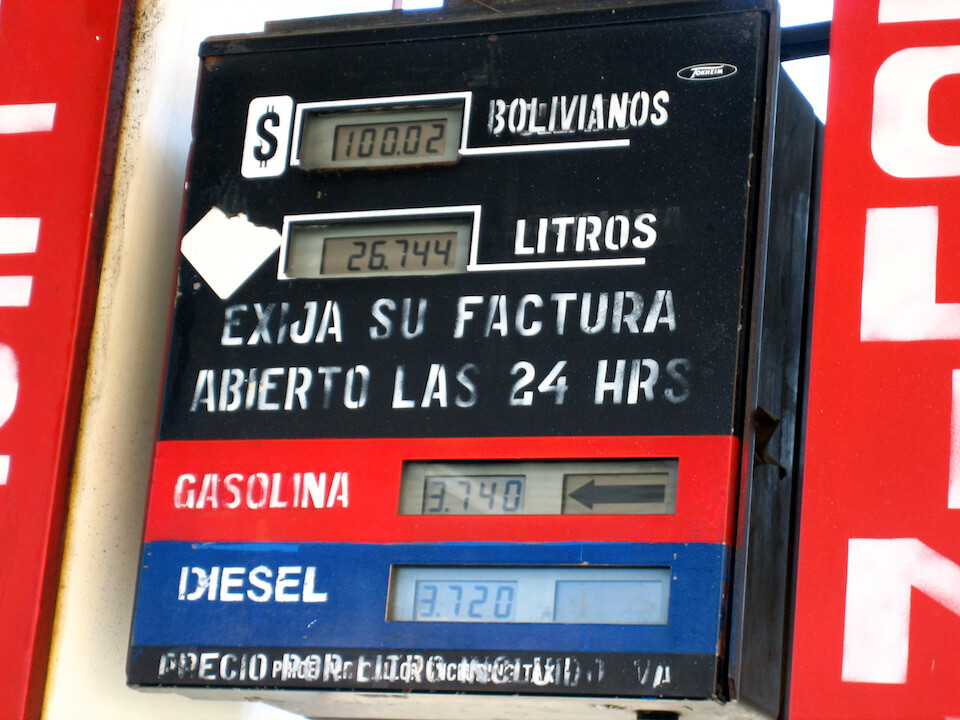
Filling up the tank on the outskirts of the city. The price of gasoline is fixed all throughout Bolivia and there's only one grade, I think it's close to an 86 octane. Bol 3.74/liter = USD 2/gal, half the price it is from Peru.
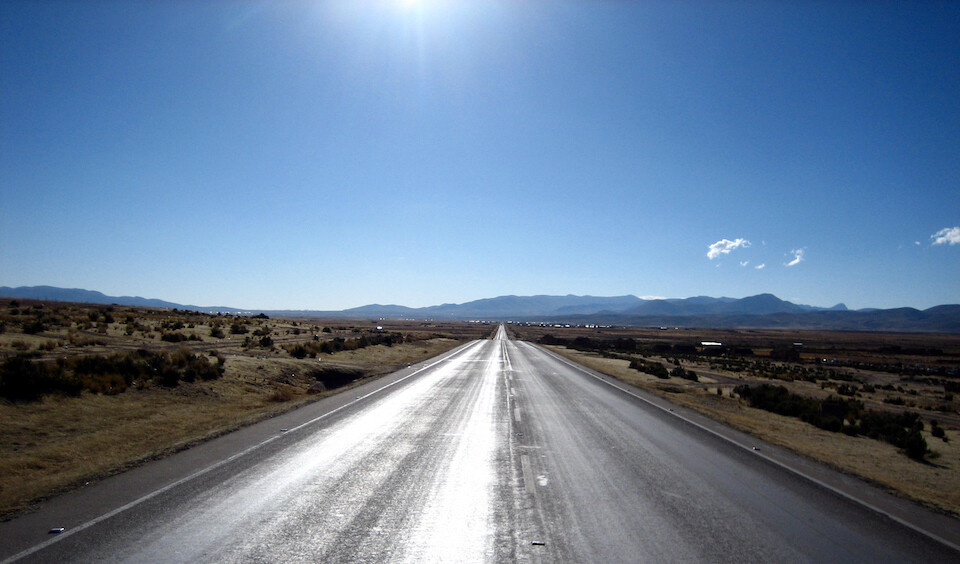
Heading out on the flat altiplano at around 4,000 m (13,120 ft).
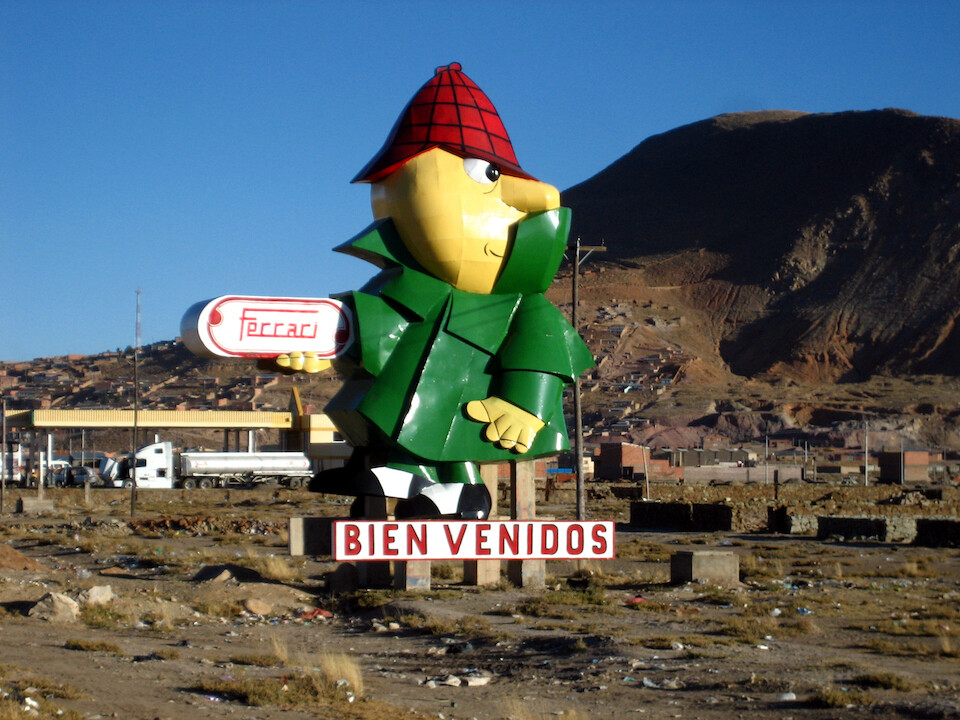
Sherlock Holmes and Ferrari(?) welcoming you to Oruro, a city known for its carnival celebrations.
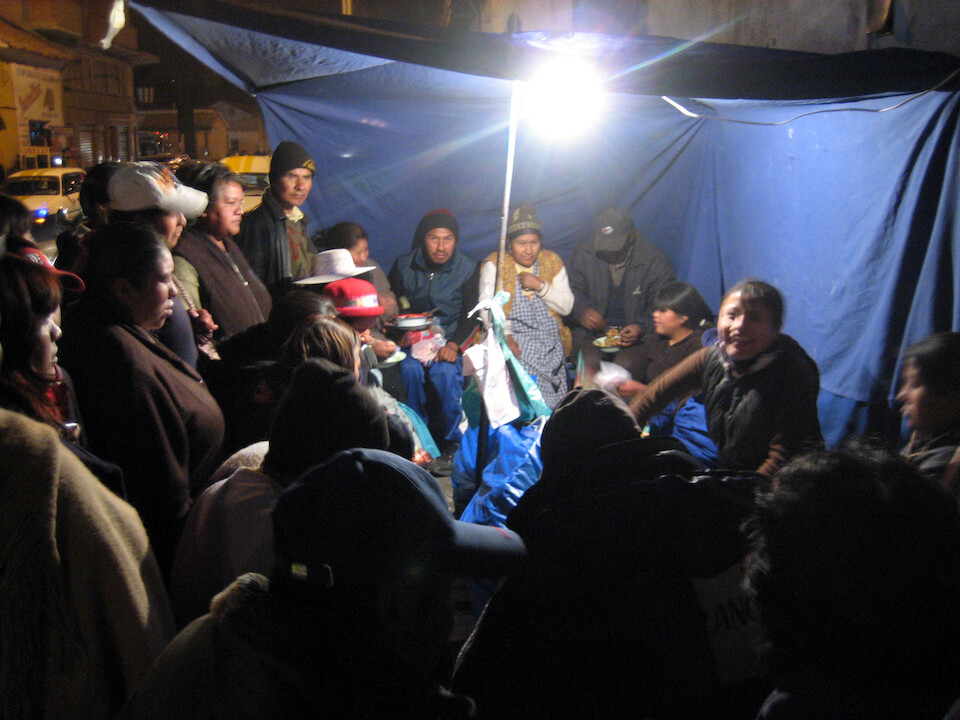
After finding a small hotel, a residencial for 25 Bolivianos with parking, I walked around seeking out a place to eat and where ever there's a crowd of locals around some pots of food, it's gotta be good eats.
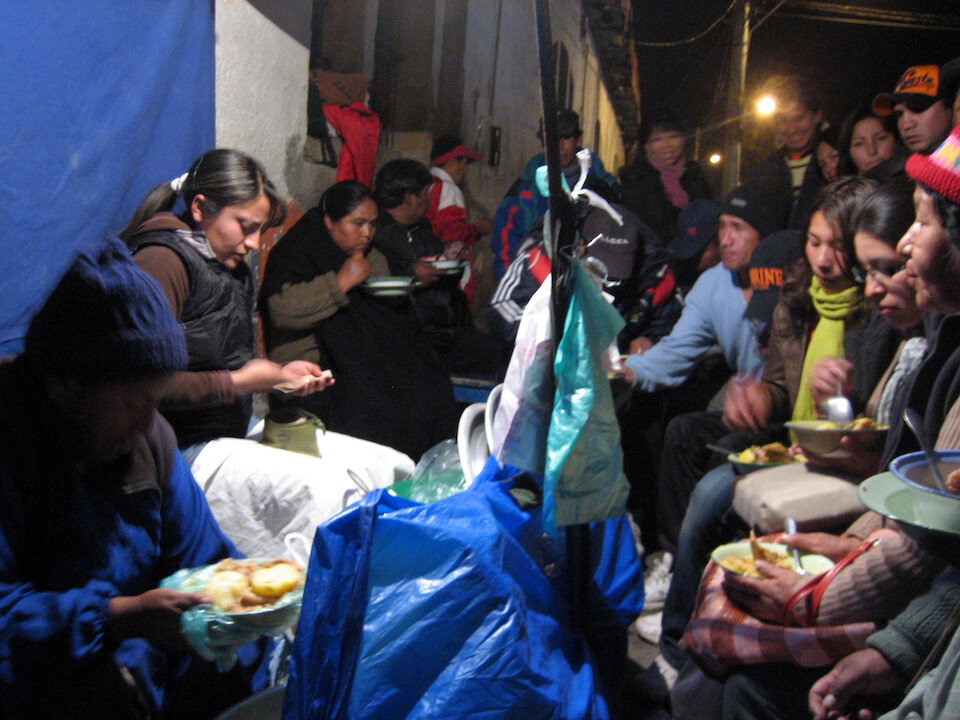
It was a mother-daughter team working rapidly to serve out their food and people were waiting patiently in line for their dinner.
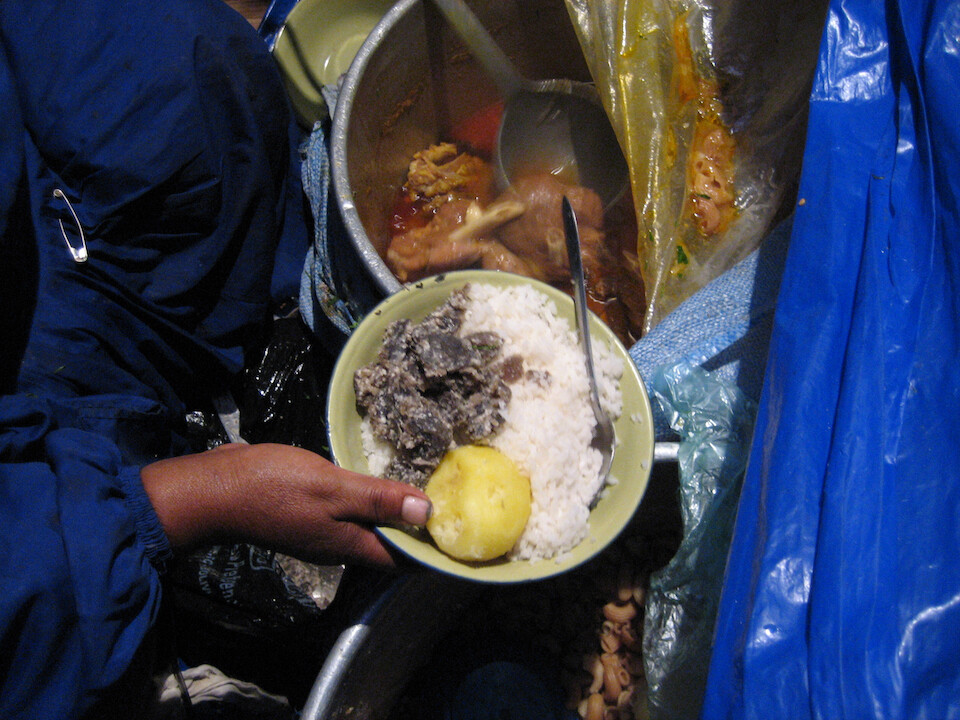
Menu was rice, a potato, some chuno (freeze-dried potato of the Andes) and a meat choice of chicken or lamb (cordero). I went for the lamb.
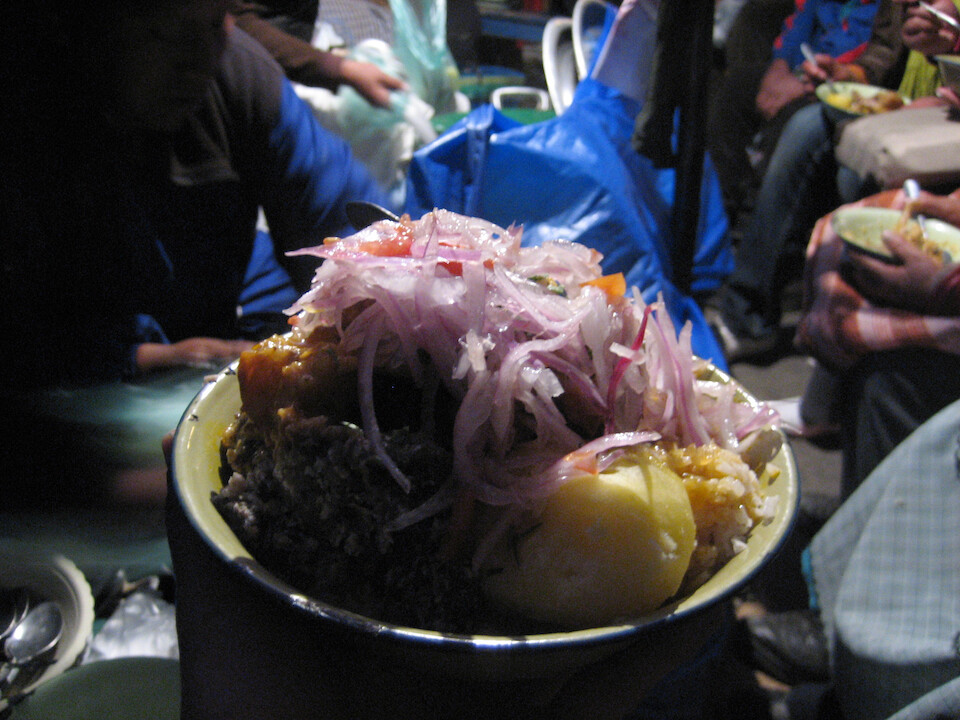
And topped with some onion and tomato salad. All for 12 Bolivianos (USD 1.75). After you empty your bowl, you can get some thin pasta soup for the chilly night. The people welcomed me to sit and dine with them, recognizing I was a stranger when I started taking photos.
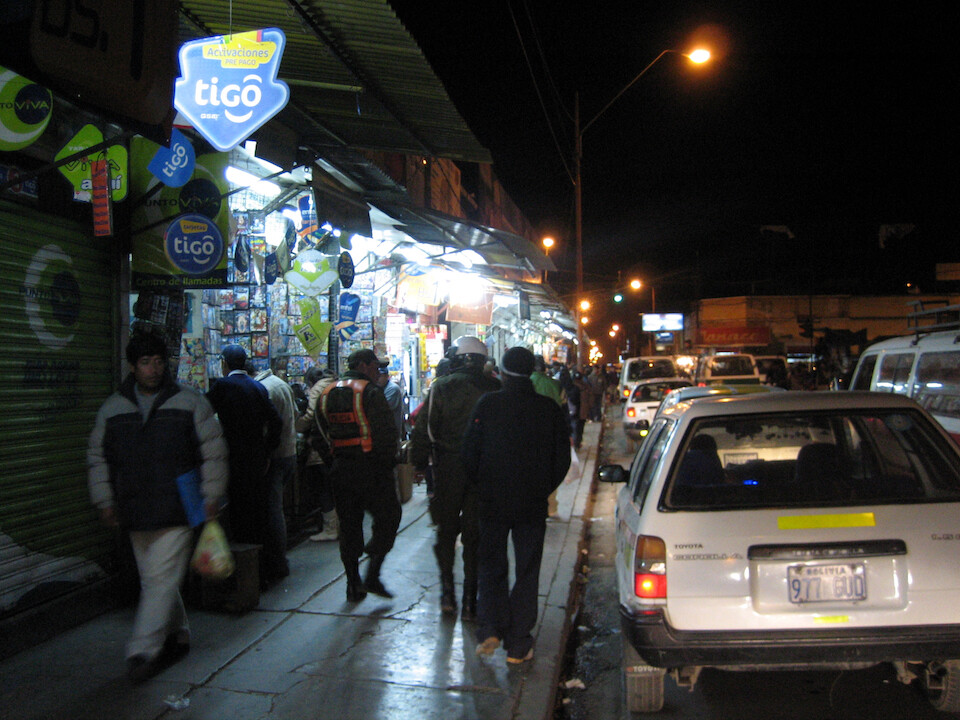
A busy street near the center where there were numerous juice bars serving up protein shakes.
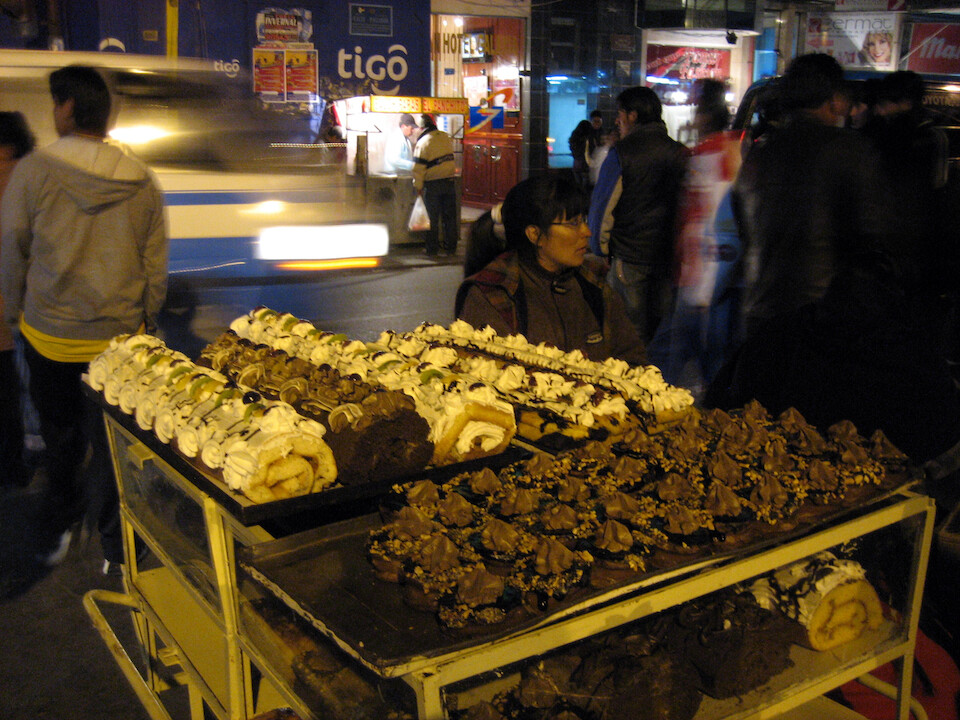
The cakes looked real appetizing but they were in the open air at an intersection and I already consume enough carbon monoxide while riding, so I passed.
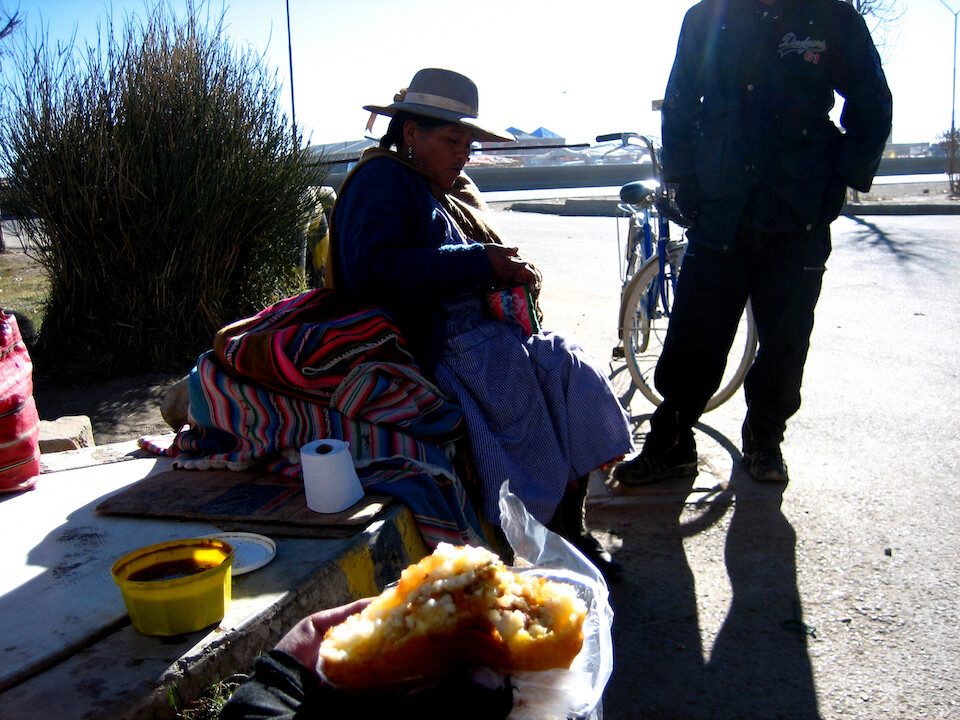
Taking off the next morning and grabbing some quick breakfast at a gas station of an empanada with eggs and some veggies. And homemade hot sauce is always around in Bolivia and it's good. Note the plastic bag that the empanada is served in. In general, I feel people serving food have a good sense of hygiene here.

South of Oruro, heading towards the Salar. The mountains on the left grind down to the flat plains on the right.
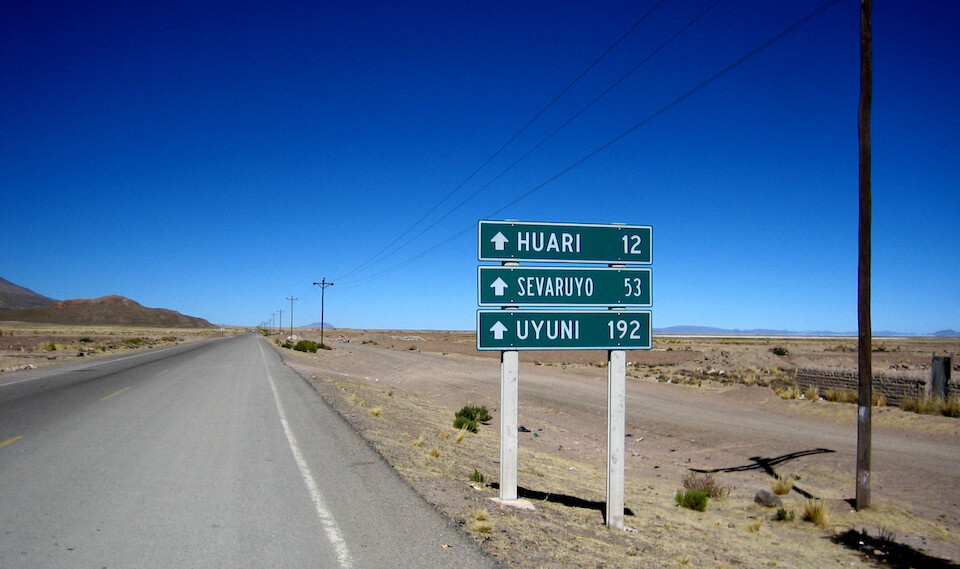
Distance board. The pavement ends just outside Huari. I wasn't going to Uyuni directly.
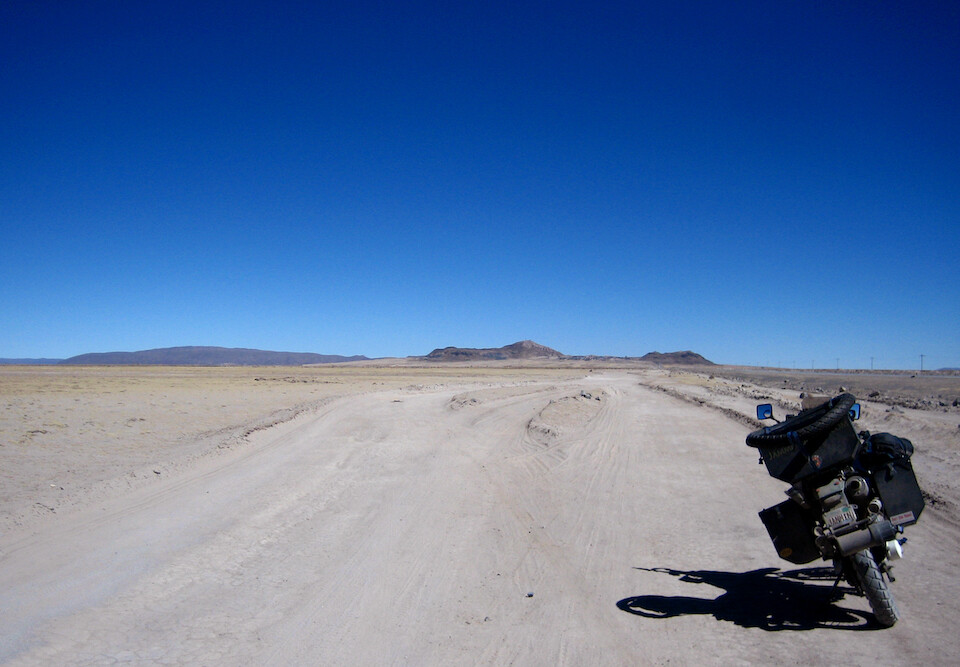
On a turn-off, heading west to the town of Jirira, where I planned to enter the salt plain and ride across the salar to Uyuni. This road was being paved but it wasn't open yet and there was a wide sandy track instead.
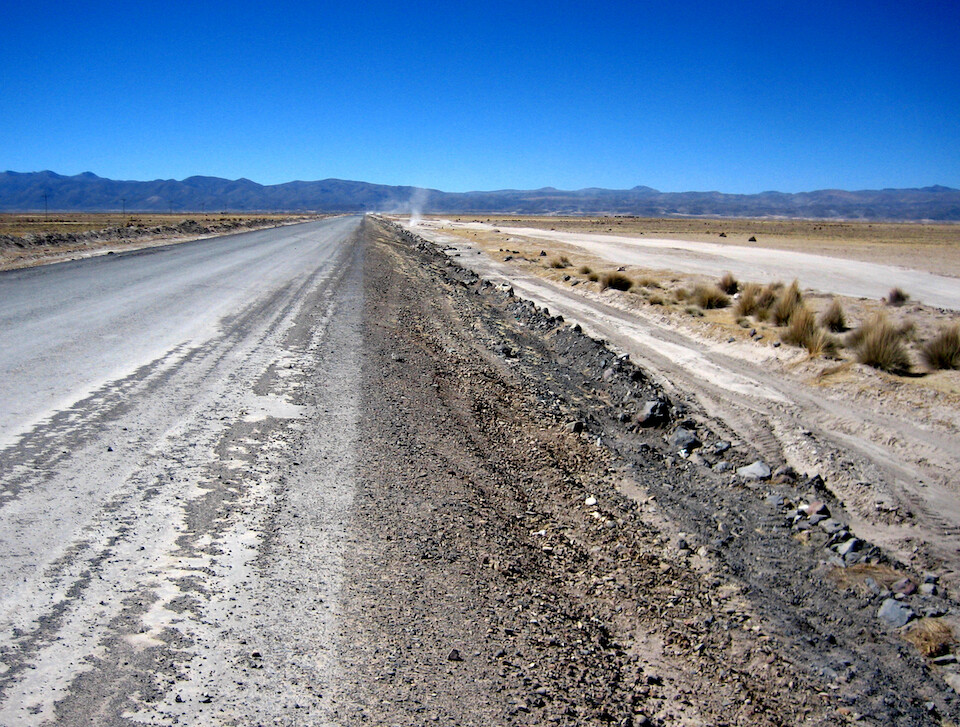
After seeing a local biker buzzing by on the new pavement, sneaking through the barriers, I figured I could easily climb this sandy embankment to get up to the asphalt. But my rear tire sunk in some soft sand and I gave it too much throttle, which ended up burning a fibre plate in my clutch (heavy rear weight and touring tire - no match for the sand). I managed to climb up the embankment and then realized I couldn't go faster than 32 kph (20 mph); the engine spinning freely as the clutch wouldn't engage past slow speeds.
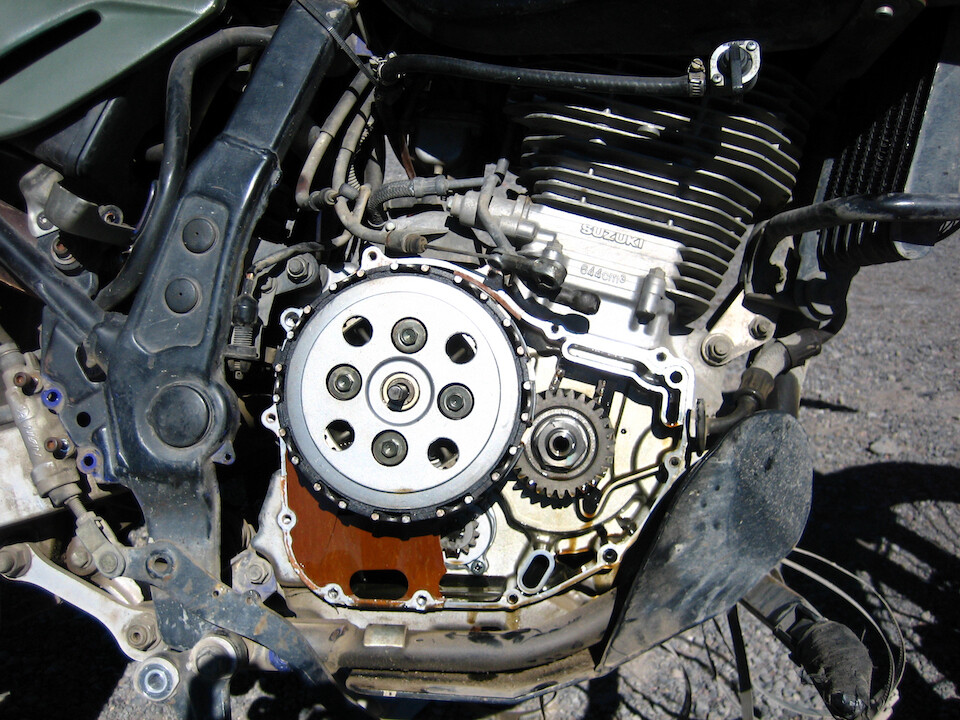
Burnt clutch in the middle of nowhere at 3,600 m (11,800 ft). This engine had 36,800 kms (23,000 mi) at this point.
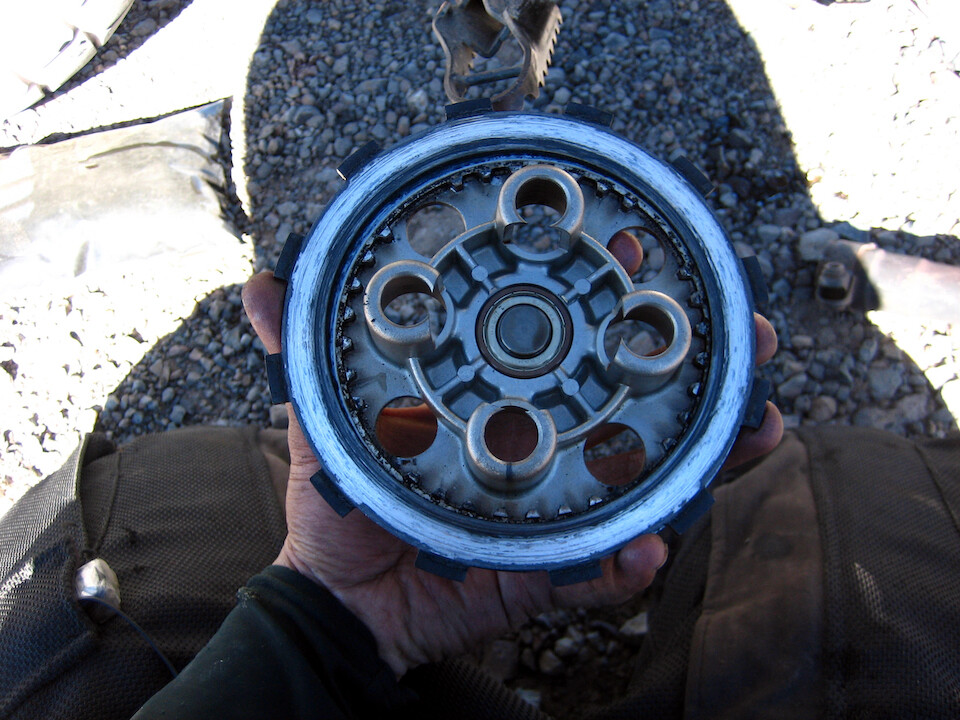
At least I had all the necessary tools to go into the engine and diagnose the problem.
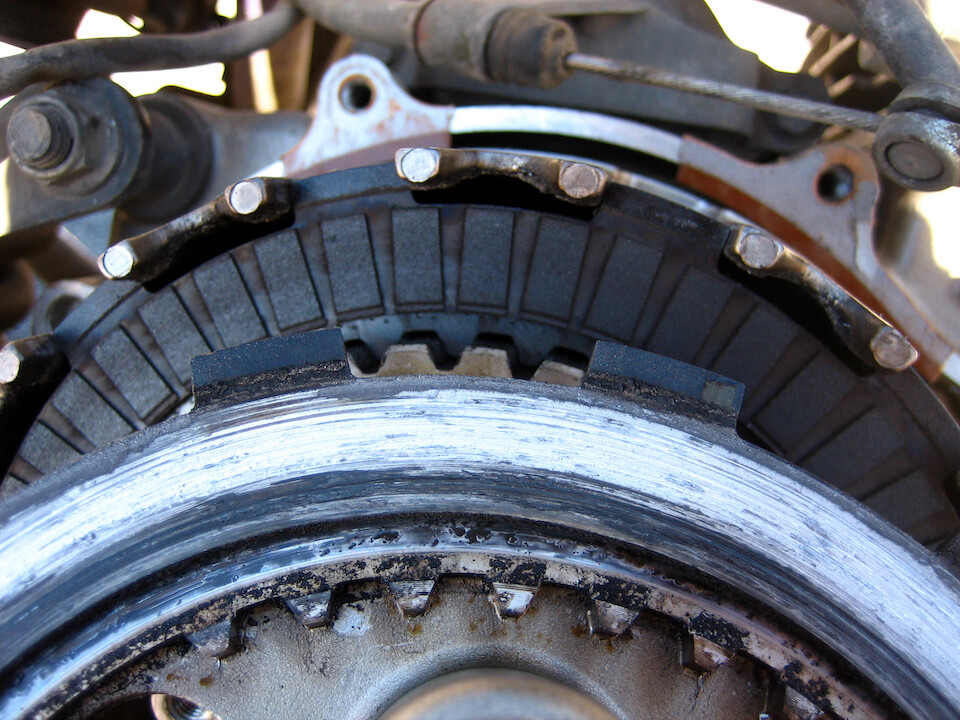
The fibre on the first disc was completely disintegrated (it's supposed to look like the disc behind it).

Storing the oil from the engine in two zip lock bags as I had to reuse the oil, not carrying enough fresh oil and besides, couldn't really dump it just on the road. It had fibre bits of the ruined clutch all through it, but what to do.
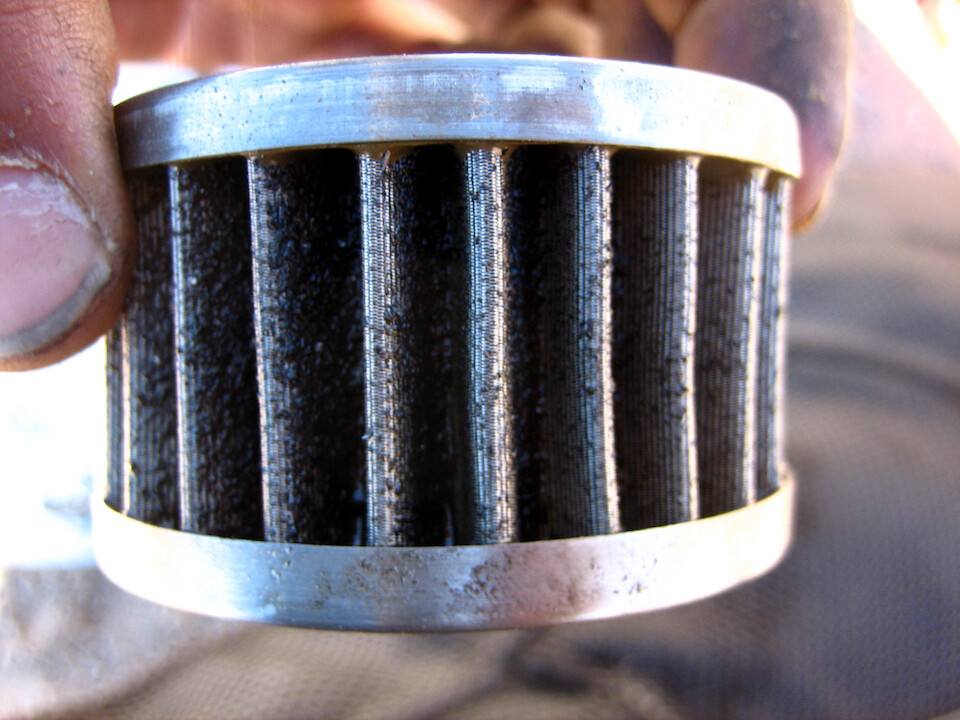
My Scotts stainless steel reusable oil filter catching bits of the disintegrated fibre from the clutch. I used some carb cleaner that I have strapped on the bike to clean the filter.
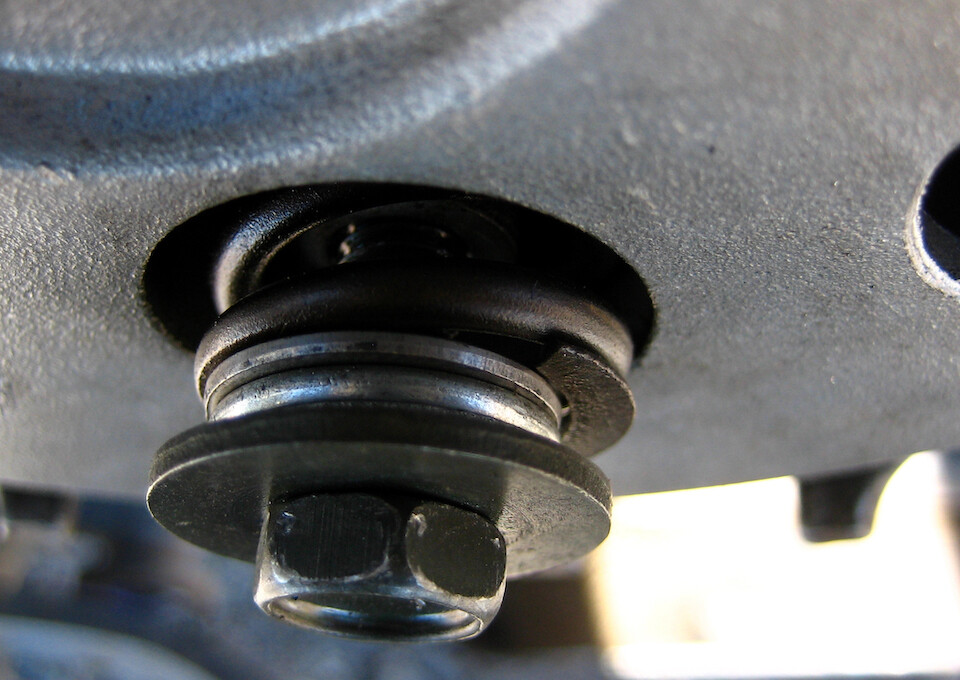
I had only ruined one disc, so I thought I could remove that bad one and use washers to exert the needed pressure for the clutch to engage properly.
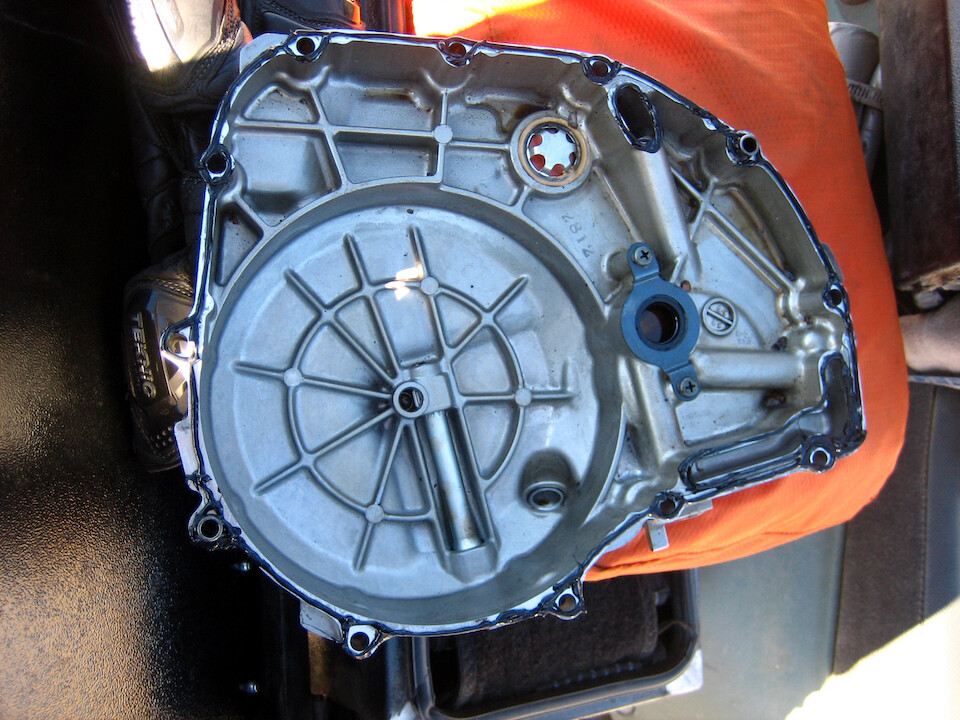
The clutch cover has probably never been open before, so the brittle paper gasket broke in many places. I spent about an hour cleaning the cover and then applying RTV silicone to act as a gasket and it worked great, with no oil leaks.
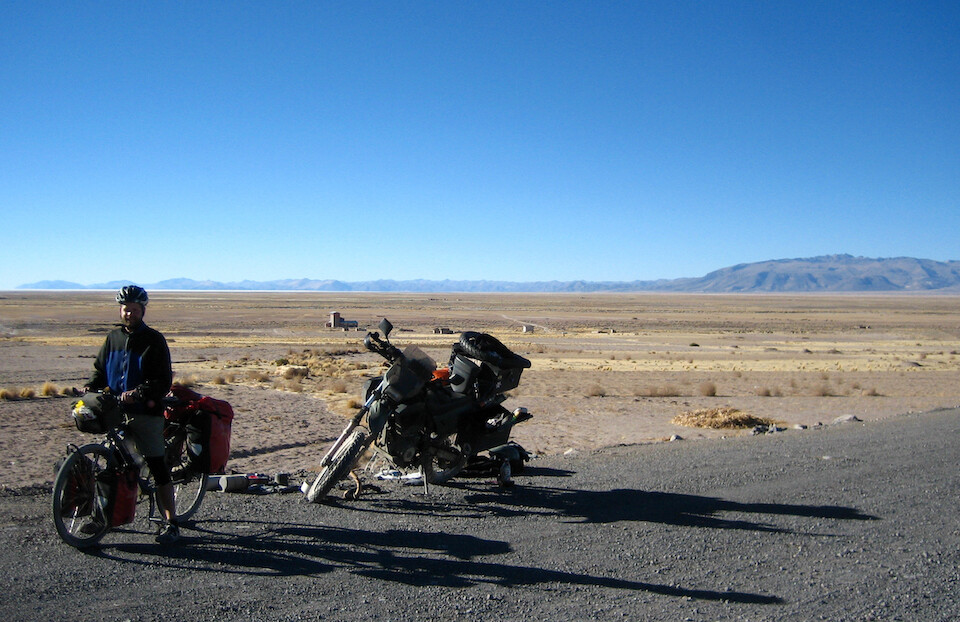
A touring bicyclist that I passed earlier in the day finally caught up with me. Kevin here is a German-Bolivian and began his trip in Mexico city in late 2008. He stopped and gave me company for a while. He was a quantum physics researcher in Berlin before deciding to sell off everything to do his dream ride. He planned to spend a week riding around the salar, carrying all his provisions and the crazy thing was that he was sleeping outside and this is winter, where temperatures drop to around -20 C (-4 F) at night (my sleeping bag's only good to 10 C (50 F)). And I always feel guilty when I pass these touring bicyclists creating their own locomotion while I sit on my seat and twist the throttle. Much respect. He told me I had about an hour of sunlight left and if the bike's not working, I needed to find shelter for me and the bike.
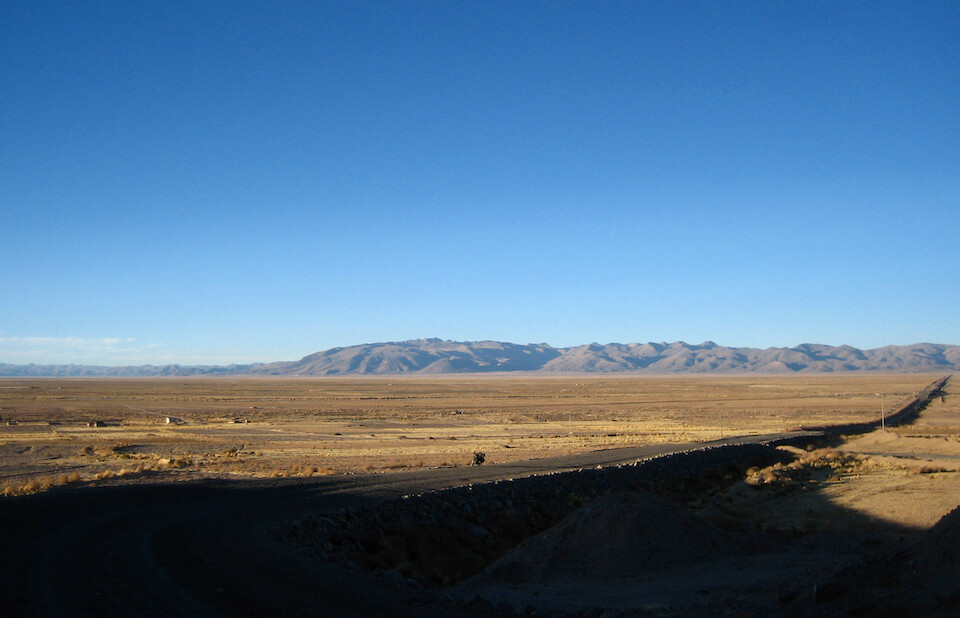
My idea of removing the burnt disc wasn't good and I had no traction in the clutch. To get a sense for where I was, those mountains on the other side are about 15 kms (9 mi) away.
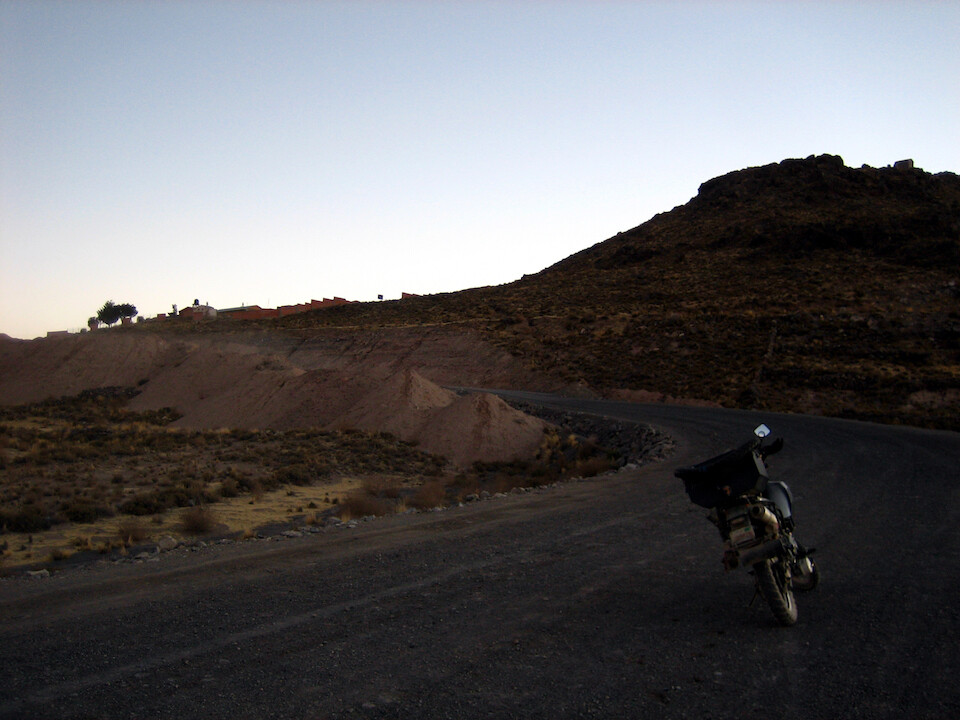
There was a small town at the top of this hill, Santuario de Quillacas. I walked into town and found a place to sleep for the night and then came back to roll the bike up the hill into safety. A few people stopped and told me it was not safe to leave the bike here overnight. This road is used to smuggle cars illegally into Bolivia from Chile and bandits are rife at night. I was struggling to make any progress up the hill; gaining 2 meters and then huffing and puffing out of breath at this altitude. I figured I had to do it even if it took all night. Don't worry, sanDRina baby, I got you covered.
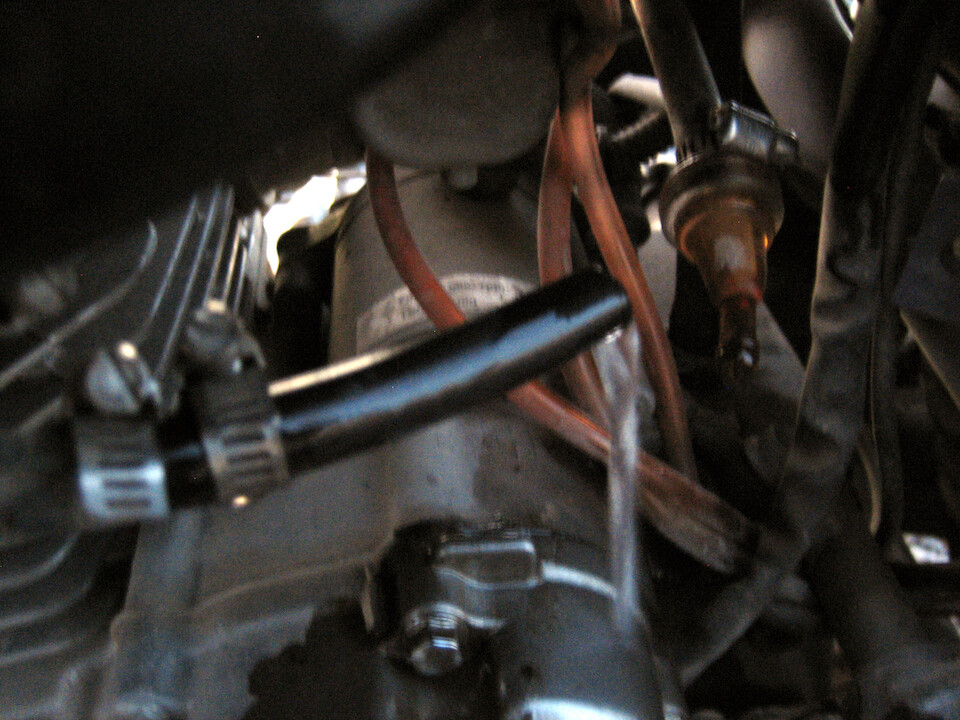
I filled up all 40 liters (10 gal) in the last town and thinking of how airplanes need to dump fuel before making an emergency landing, I decided to start dumping fuel to lighten the load that I had to push. Besides the environmental hazard, the flow rate was too low to make any difference. I would need an hour just to lose a few liters. But I kept pushing as the fuel drained.
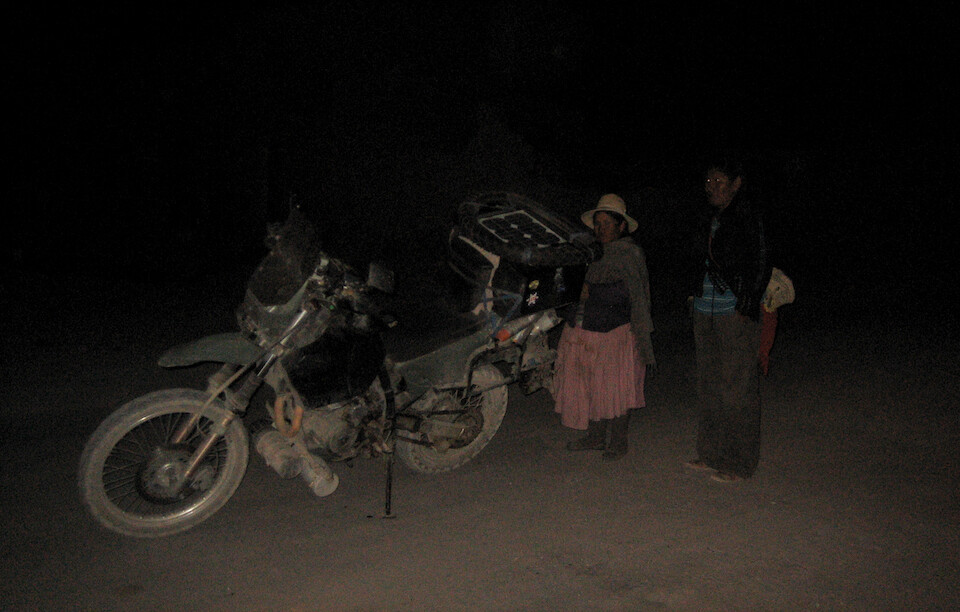
Luckily, a local quechua family was walking back into town after herding llamas during the day and they offered to help. The mother and daughter were quite strong and we made good progress up the hill. Gaining about 10 meters before a 5 minute break. And I didn't need to waste any more fuel.
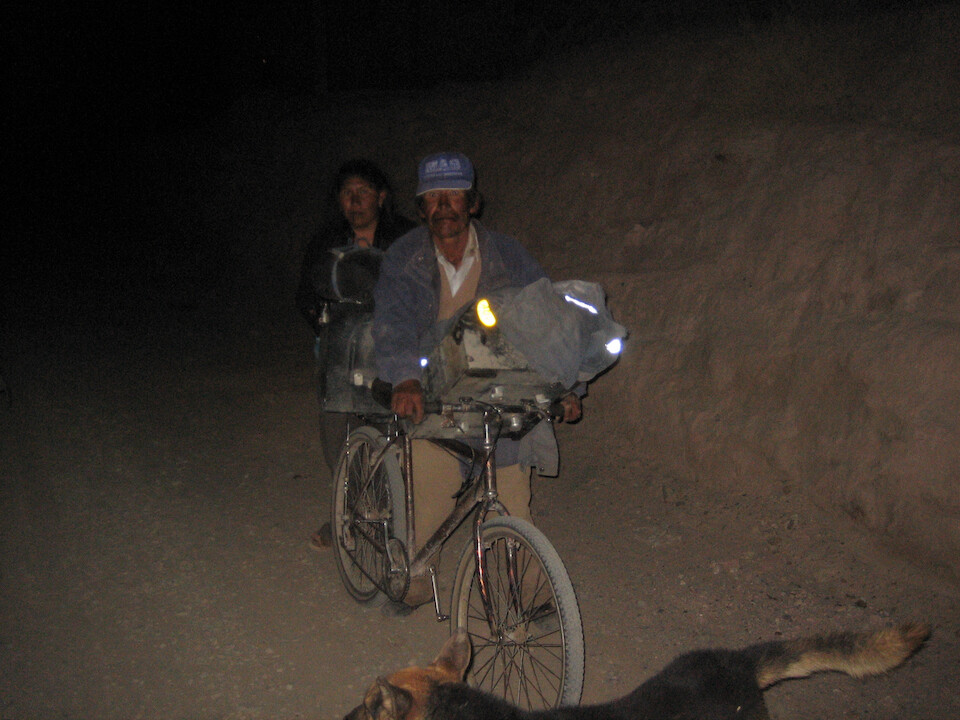
The father put my panniers on his bicycle and struggled up the hill with them. They took me to the local church, the santuario, since it had an enclosed place for safety of the bike. I thanked them for their generous help and they simply said "de nada" - think nothing of it.
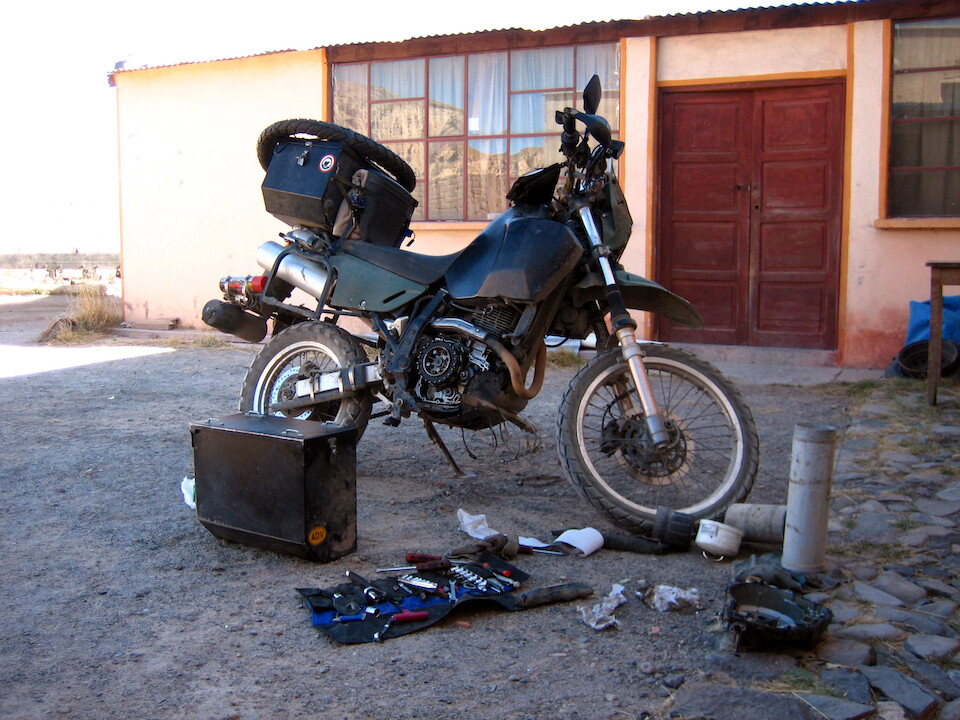
I got a bed with lots of warm blankets for 20 Bolivianos and they fed me some dinner for another 10. They had a long distance phone, so I rang up my mechanic in Chicago, Gus and asked his advice. The USD 5 phone call told me what I had to do to make it back. Gus suggested I cut some steel discs to make up the stack in the clutch to get some engagement. In the morning, I put the burnt disc back in and since the bike was rolling, I figured best to get back to a town where I could make some steel discs to get back to La Paz.
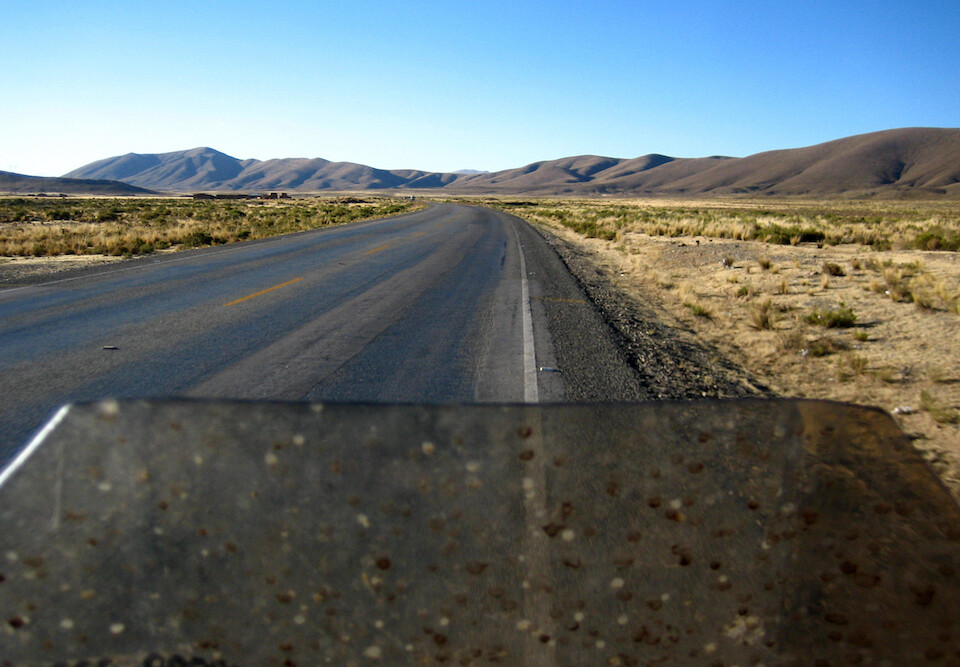
Rolling at 40 kph (25 mph) on the side of the road heading to Oruro. Luckily it was generally flat, thanks to the nature of the altiplano. It took all day and I made it just as darkness fell and the temperatures dropped.
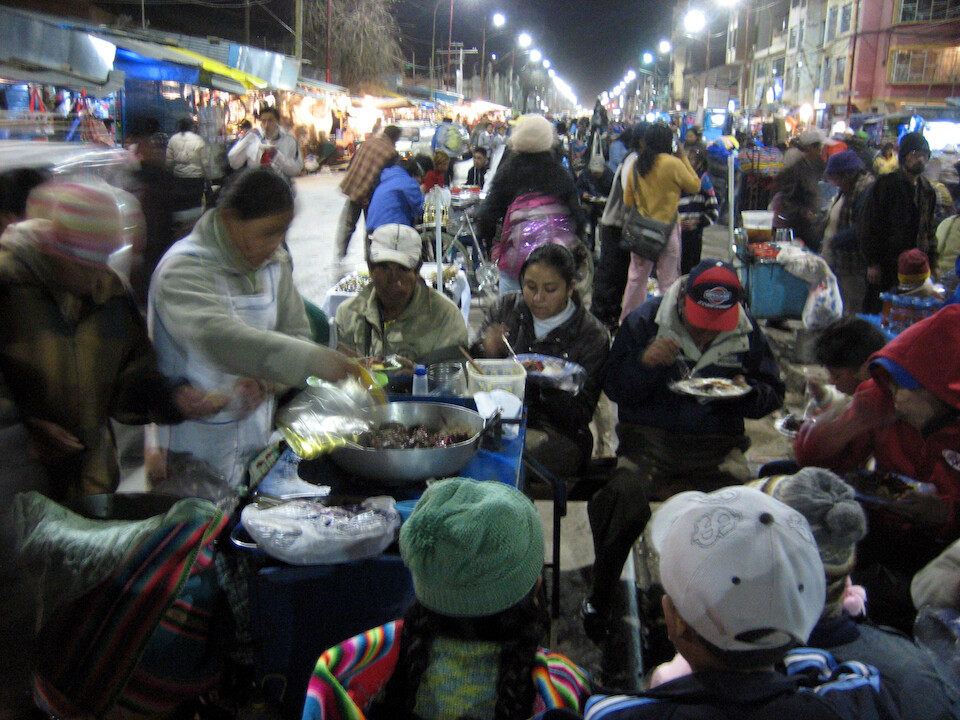
I found a residencial close to a mechanic and then when out on town to find some tasty dinner.
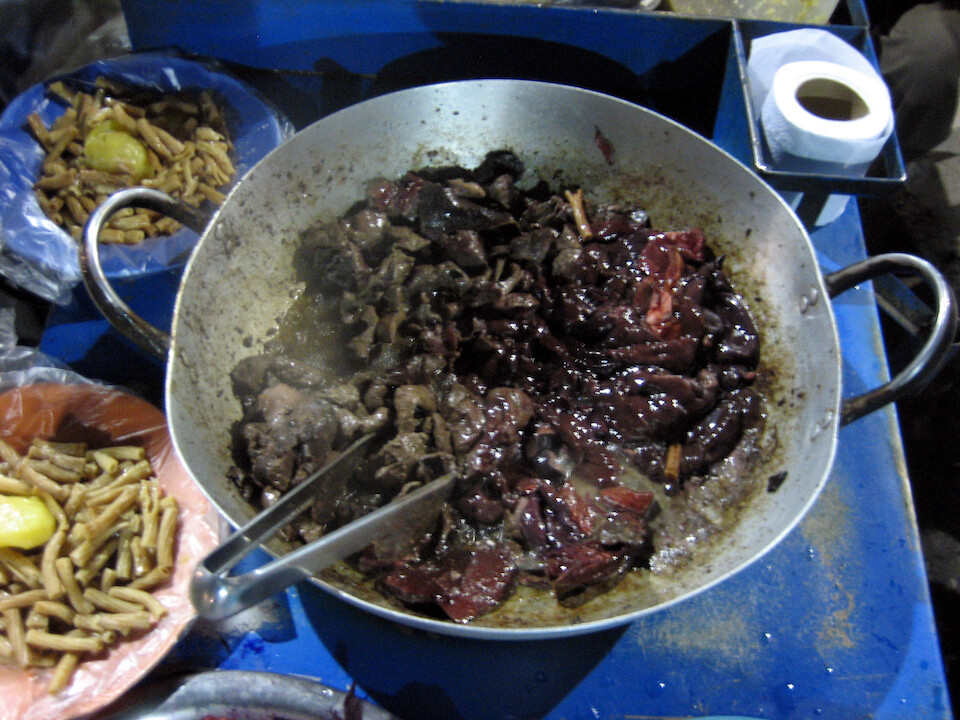
She's frying up some lamb kidneys and livers. How about some high-quality proteins, loaded with vitamins and minerals.
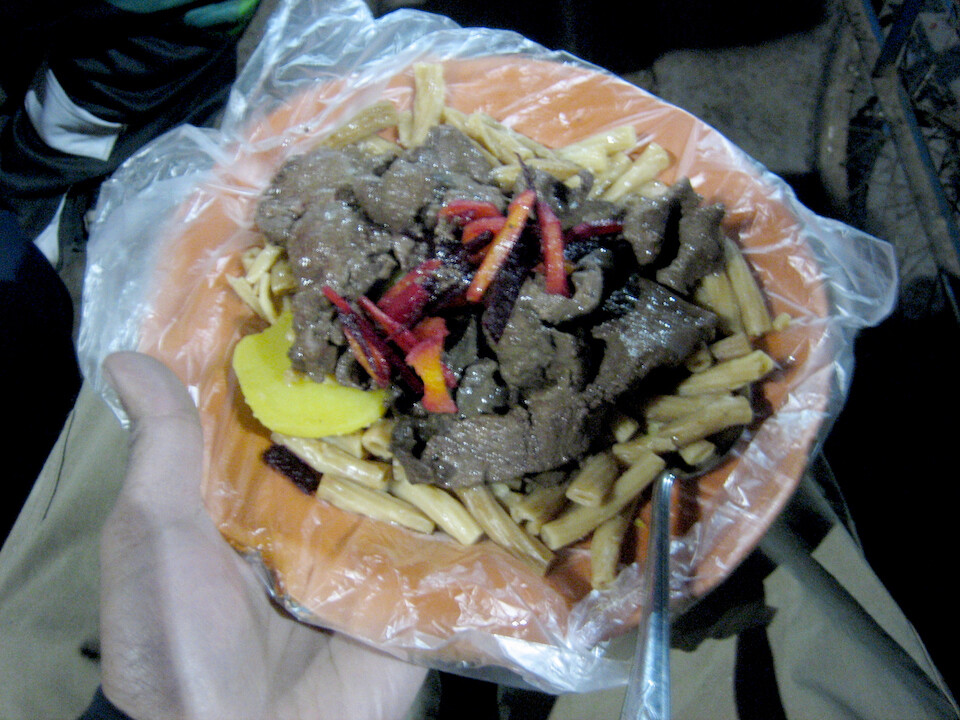
Nice, hearty meal for 5 Bolivianos (USD 0.71). The plastic covering on the plate ensuring clean food even if the plate hasn't been cleaned properly.
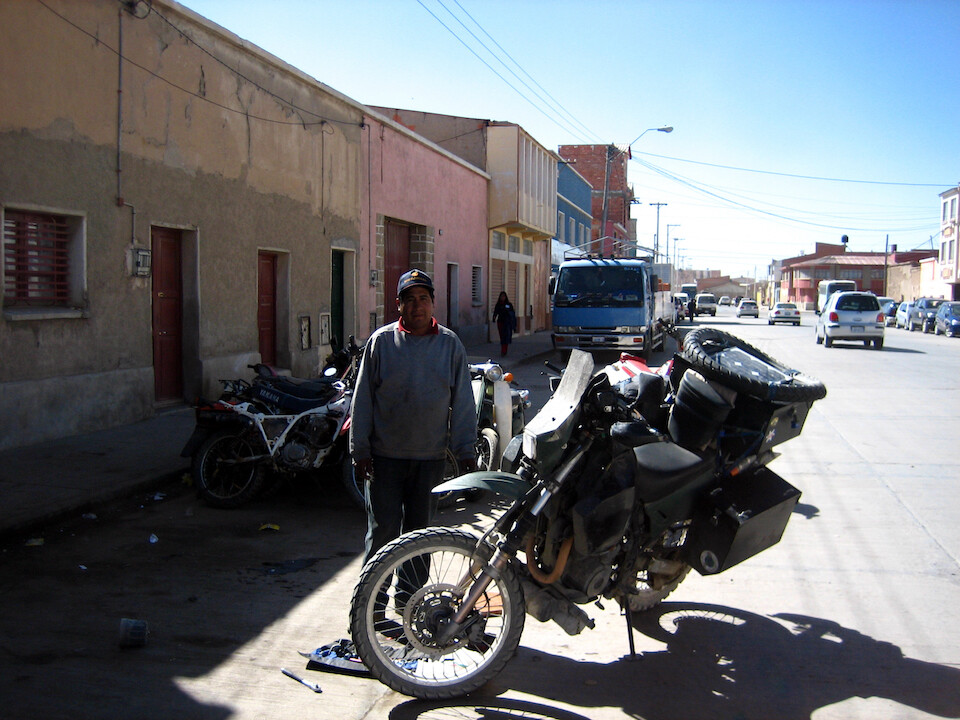
The next morning, Fernando here offered to help to get me back to La Paz.
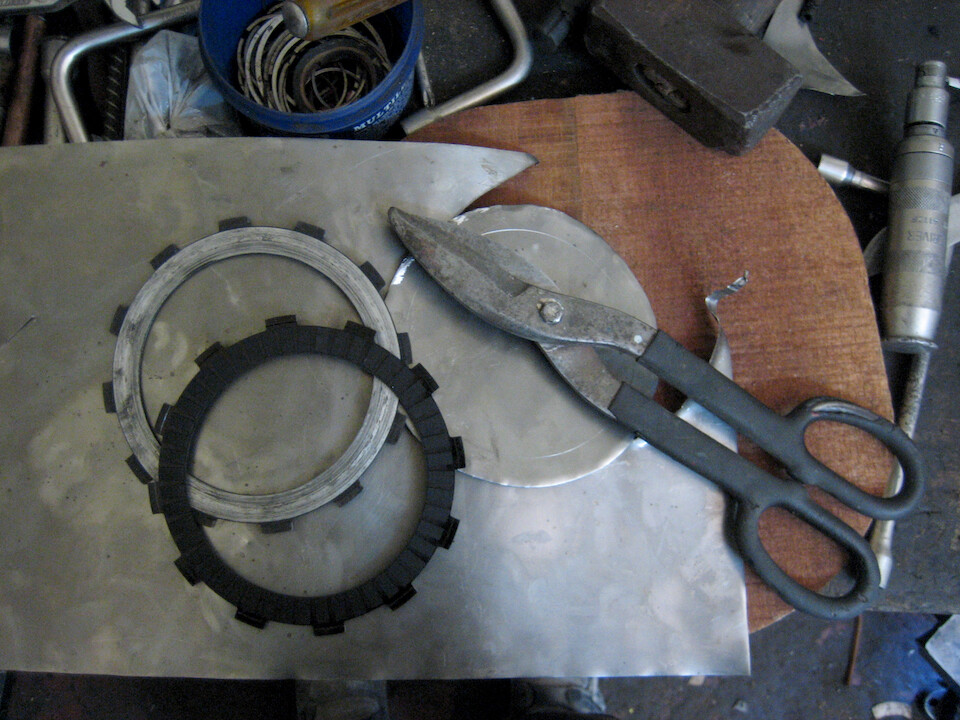
He got me some sheet metal and I set about sniping the discs.
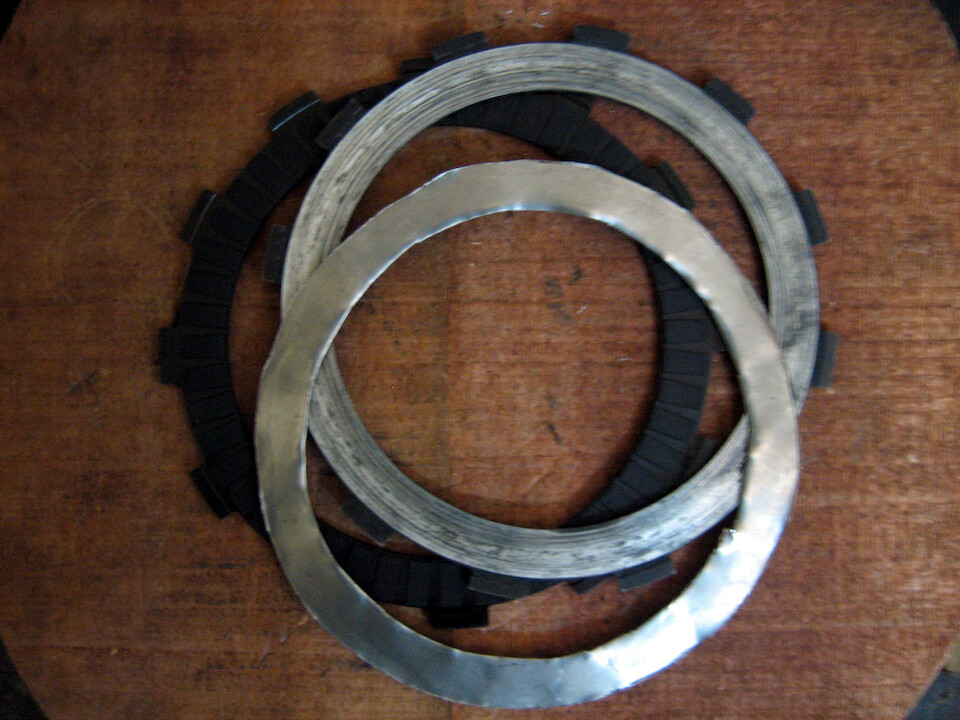
Took quite a while, but I managed to make two discs that would take up the stack of the ruined fibre.
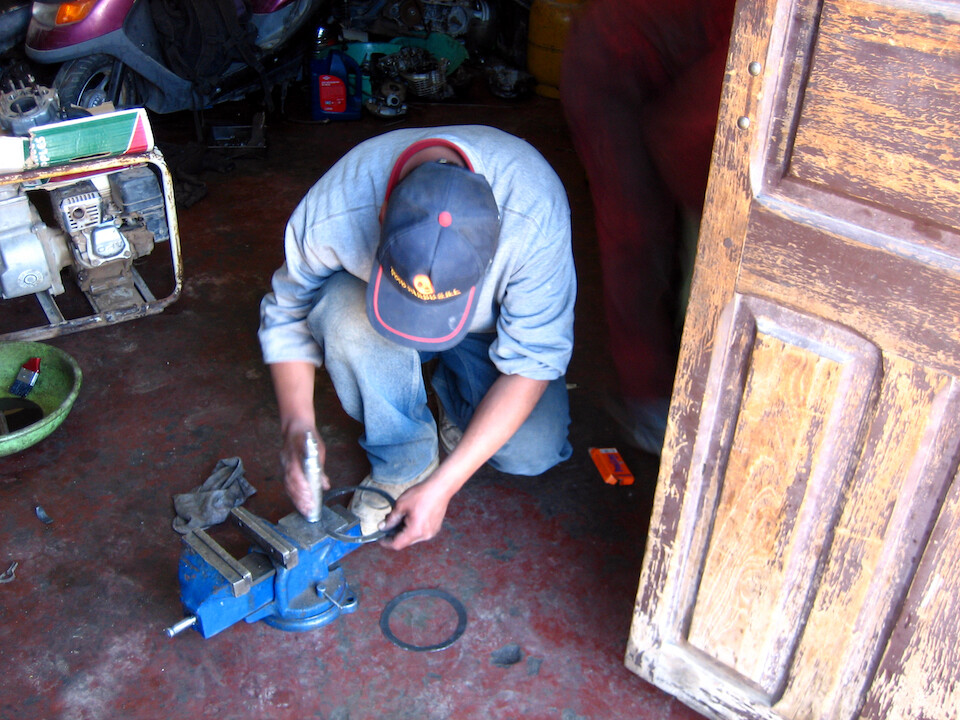
Fernando flattening them out to make them fit in the clutch basket. He didn't accept any payment and said it was a pleasure to help a traveler out. The steel discs worked great and I had full engagement of the clutch through all five gears and speeds up to 100 kph (62 mph). I had about 3 hours of sunlight left for the 200 kms (125 mi) to La Paz. I rode with utmost focus to make it back in time.
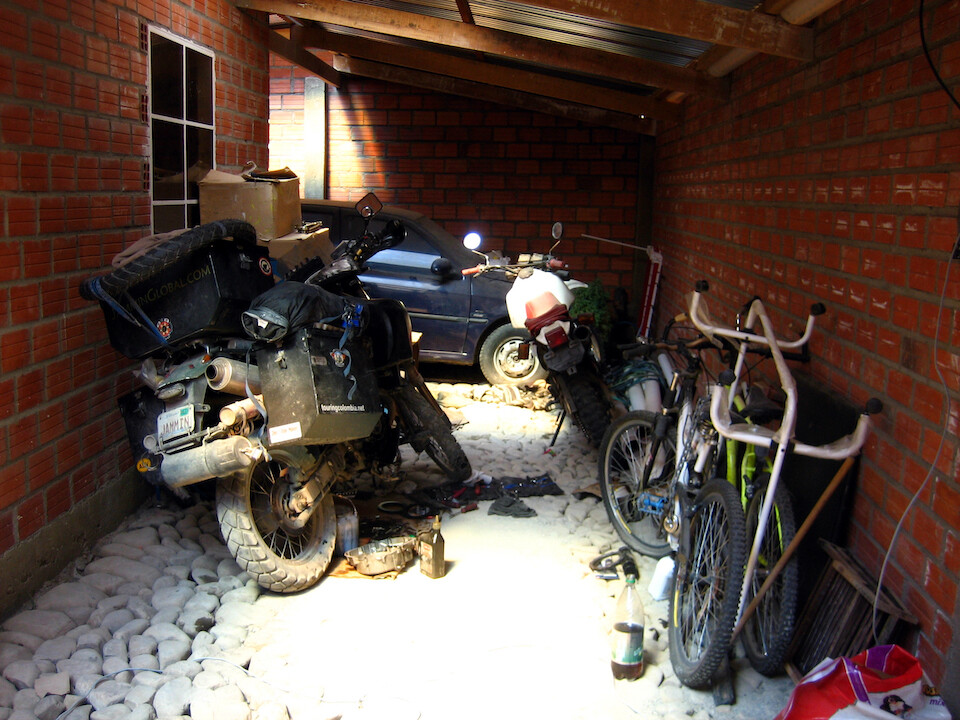
Safe again in Alfonso's home in La Paz. I was happy to see the clutch still working along the steeps of the city. My attempt to tour the southwest of Bolivia came to nought and now I was running out of time to enter Brazil, but I promised to come back again to see the Salar.
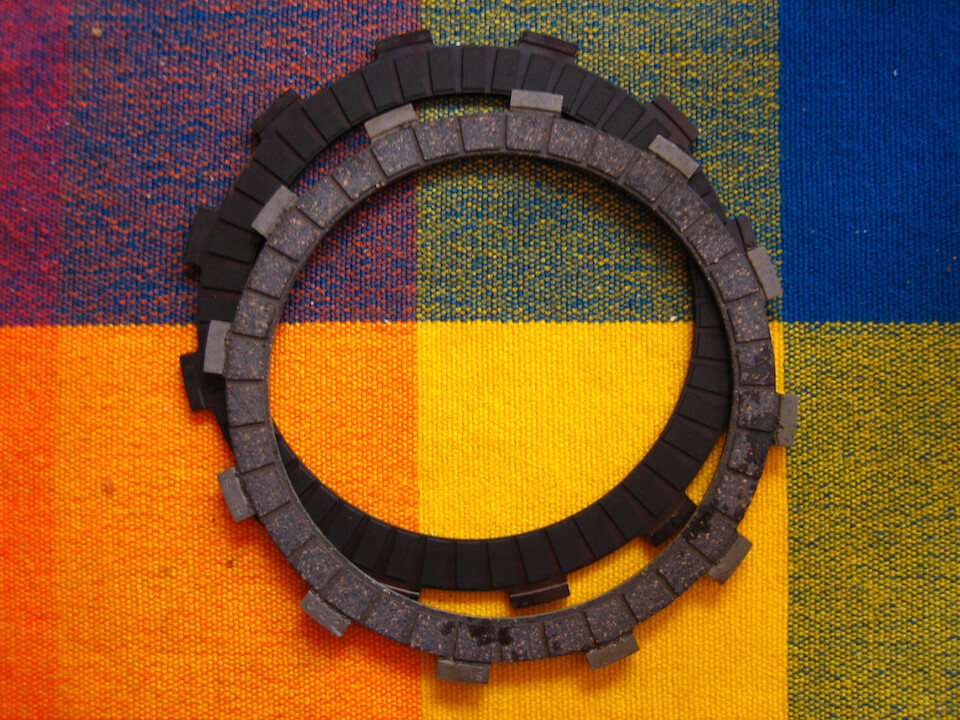
The next day, we went around to some bike shops and luckily I found some clutch discs for a Kawasaki KLX650 that just about matched the dimensions of my clutch disc. The inner diameter was a bit bigger and the teeth were a bit smaller, but it would work and the bike felt great. I was confident of making it through the Transamazonica to Sao Luis in Brazil where I planned to get a care package from the States, now with a new clutch.
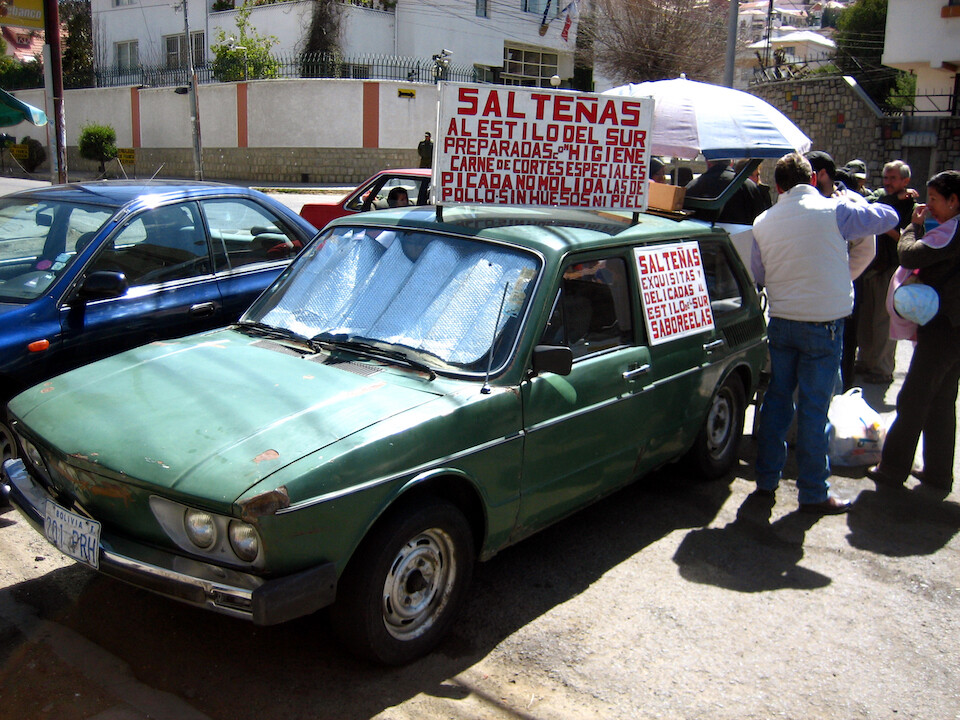
Tasty Saltenas of Bolivia. They're a fried snack from the Salta area of northern Argentina and now are part of the local culture here. We had some the other day at a bike dealership and the guys forgot to tell me that the stuffing is liquid and it dripped all over, but it was so tasty.
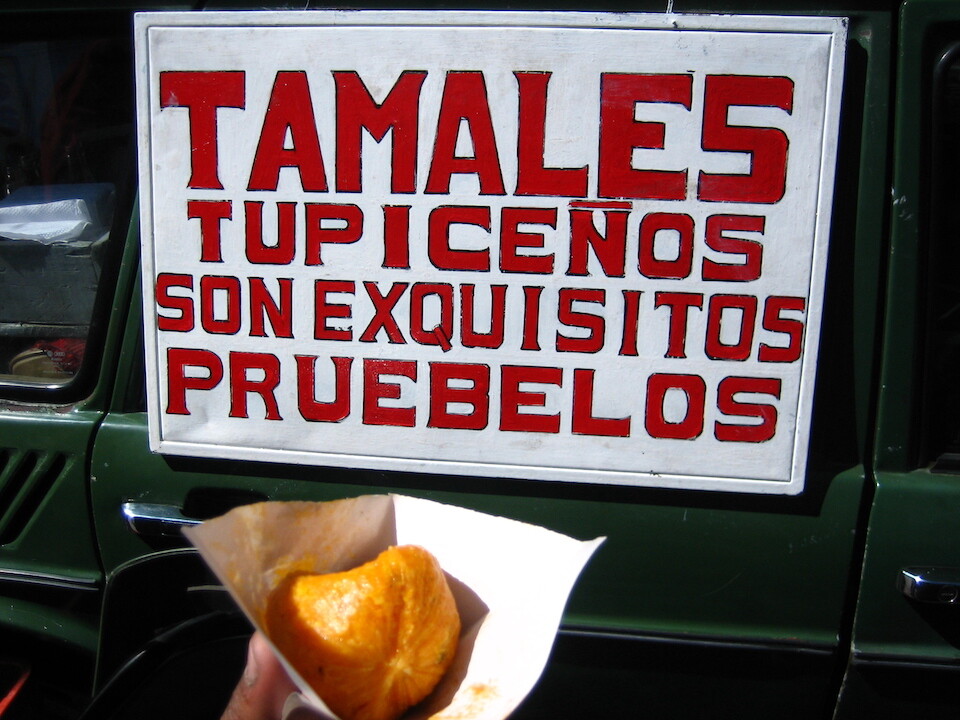
Having a tamale, another street snack.
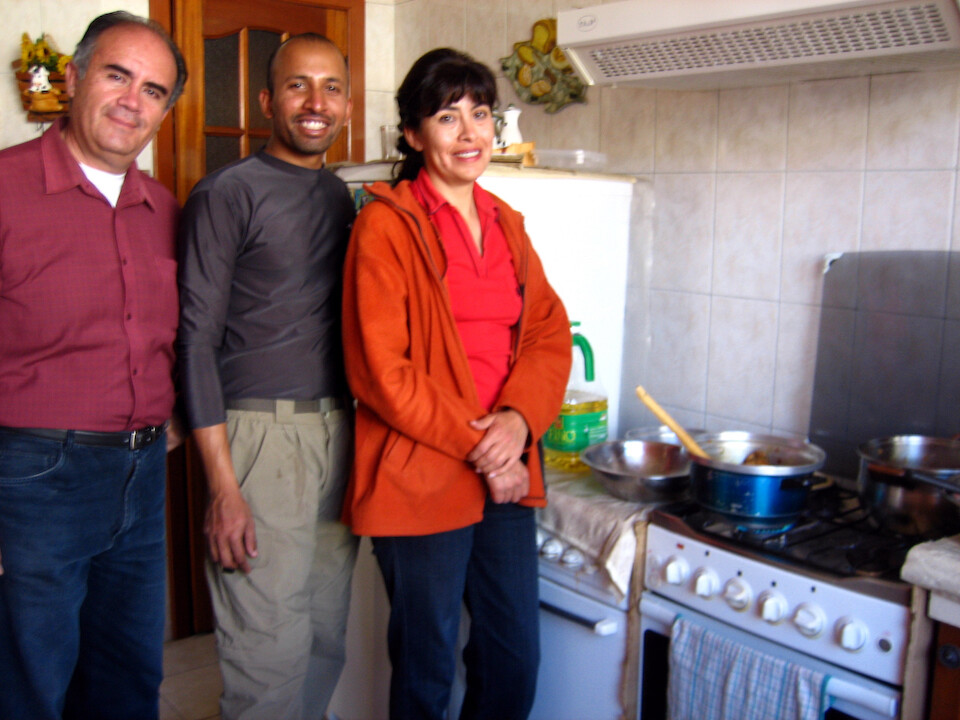
After hearing about my chicken curry at Alfonso's last week, Gonzalo asked if I could prepare it for his family. Happy to spread the joys of curry.
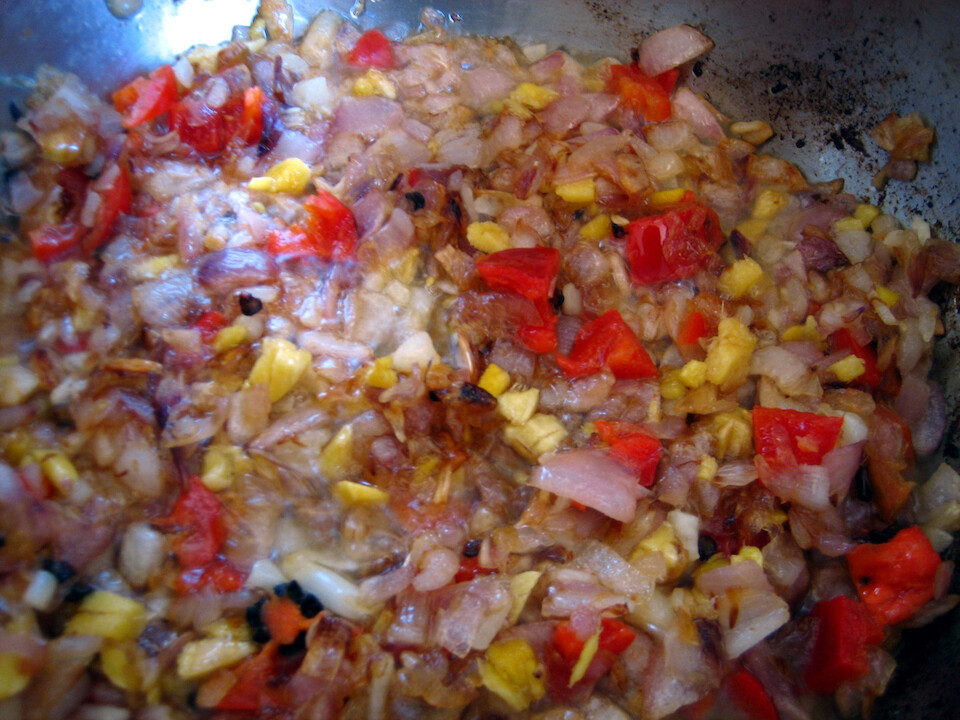
Frying some onions with ginger, garlic and chillies. You can't go wrong with a base like this.
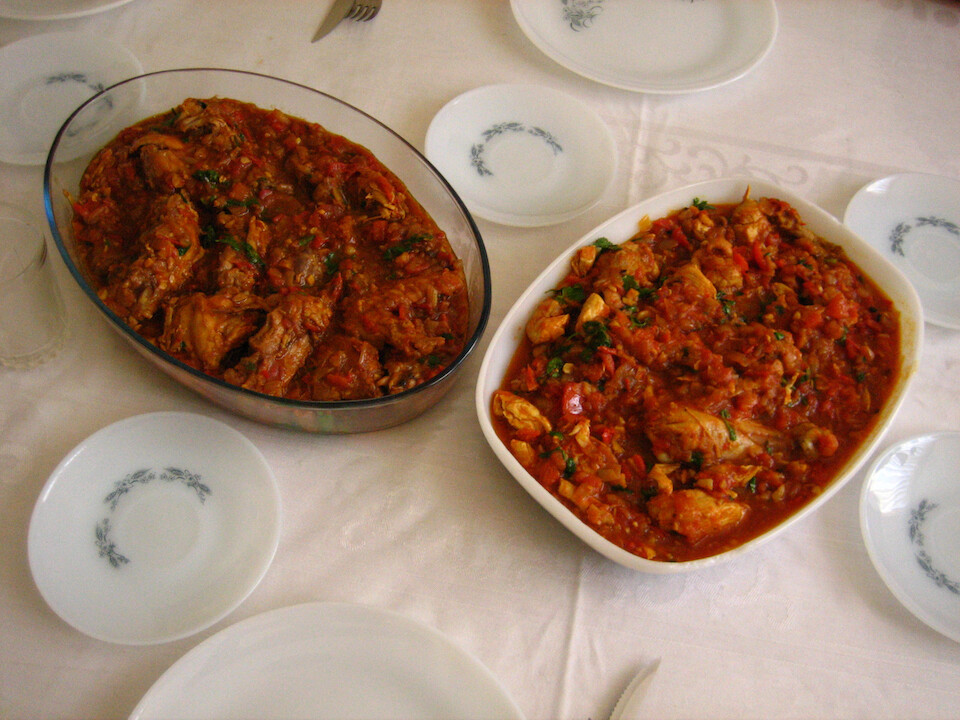
I'm getting better and better at making this particular recipe and I'm happy I can source all the ingredients locally (you can find curry powder everywhere) and it comes out pretty good using different pots and stoves each time.
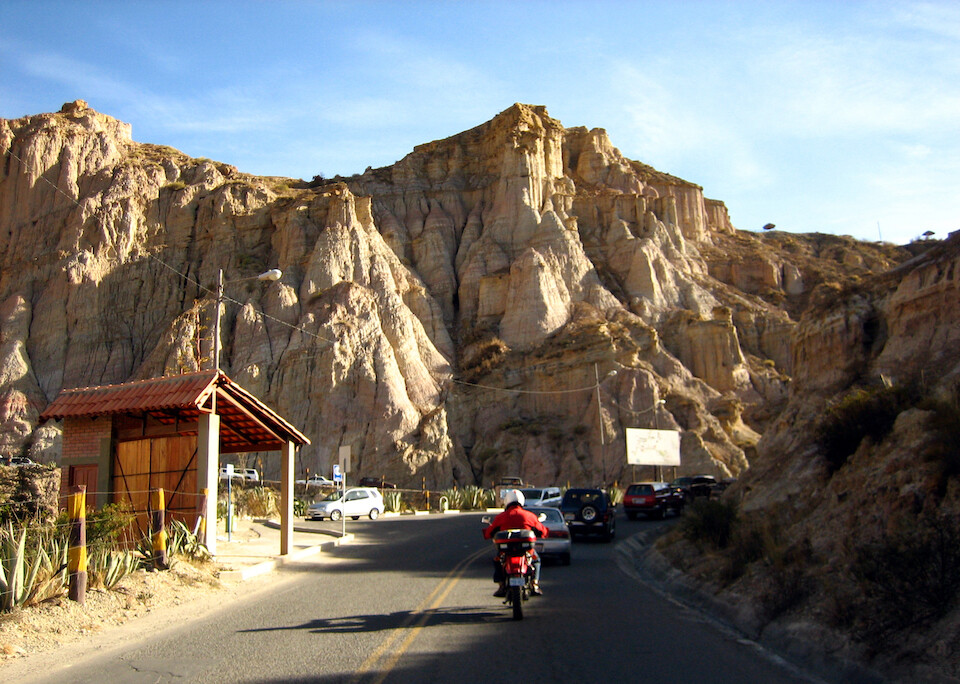
Going for a test ride after lunch to make sure the clutch feels good and it did.
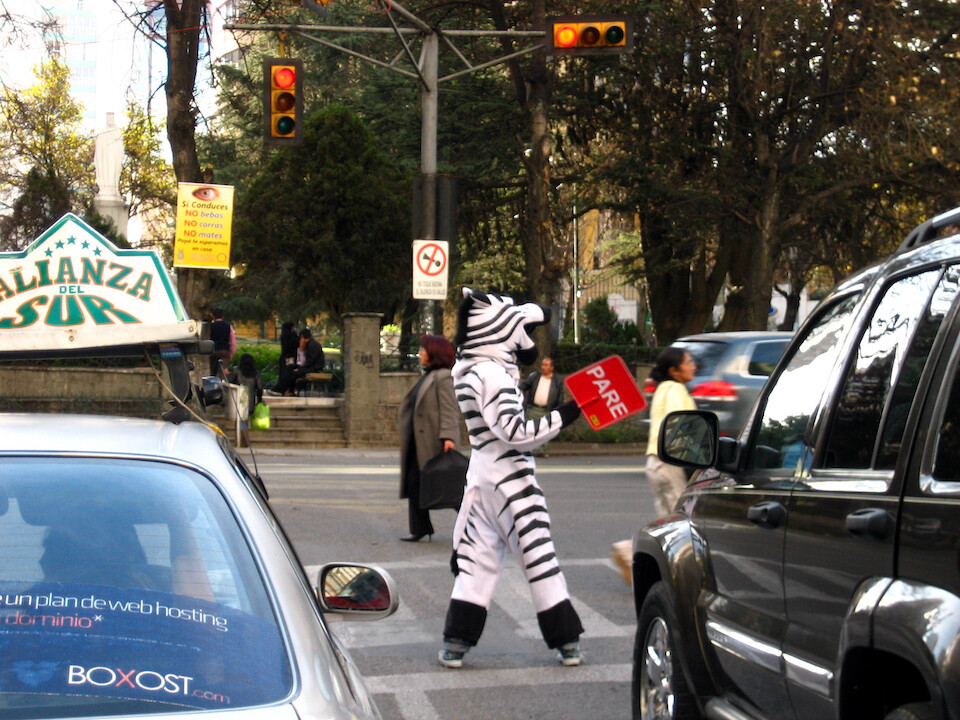
Zebra Crossing Enforcer. The local mayor's office has these guys dressed as zebras at various zebra crossings, as their known in Britain or pedestrian crossings for everyone else.
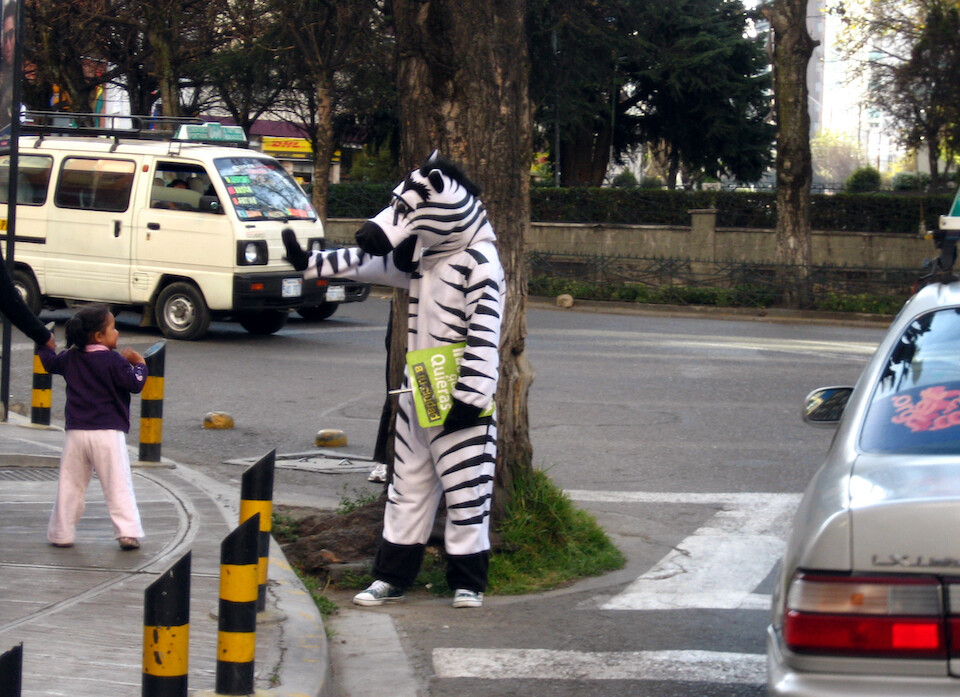
Fun-loving characters and Alfonso said you could be a zebra for a day, volunteering to the city. They're trying to foster good habits of crossing only at designated places.
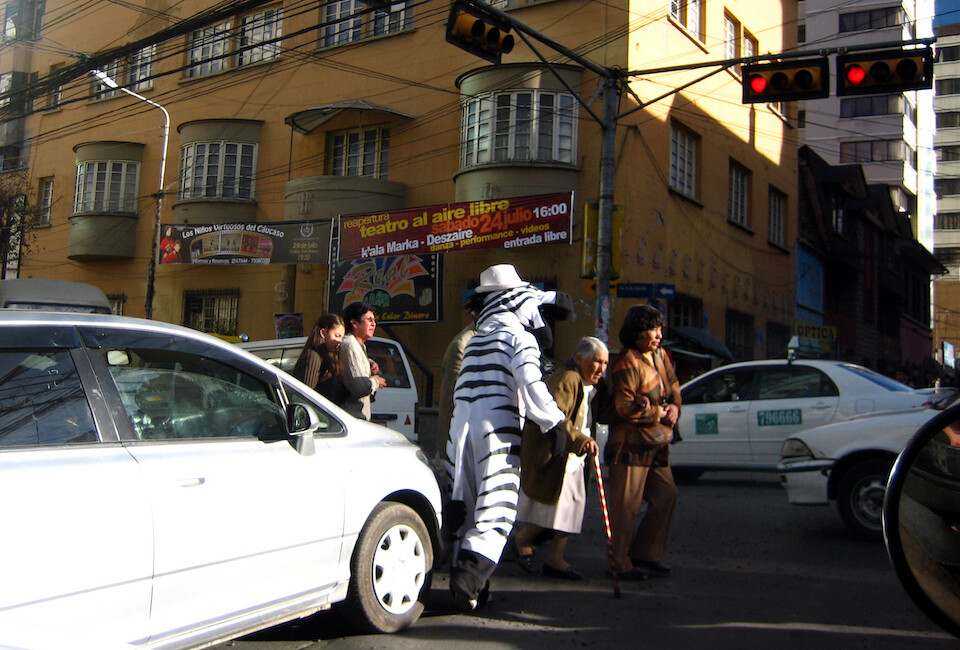
This car on the left stopped past the white line into the zebra crossing making it harder for this lady to get across and the zebra gave the driver a scolding, making a big drama out of it - you know, a little public humiliation to drive home the message. Quite progressive of La Paz to see this.
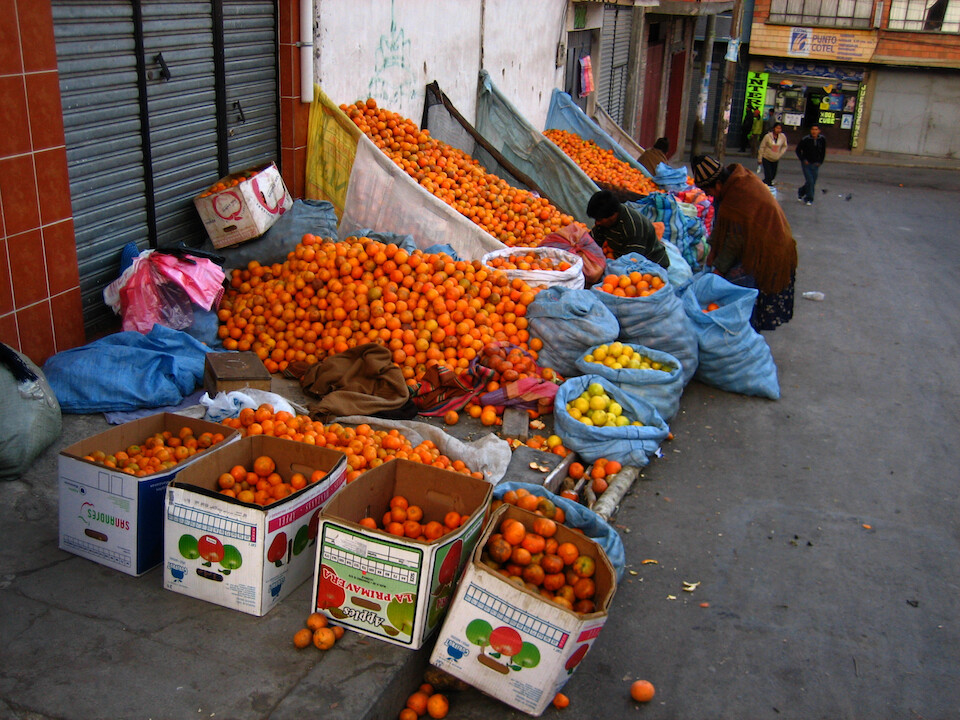
Alfonso's wife is from the Yungas and her family harvest oranges to sell them in the city.
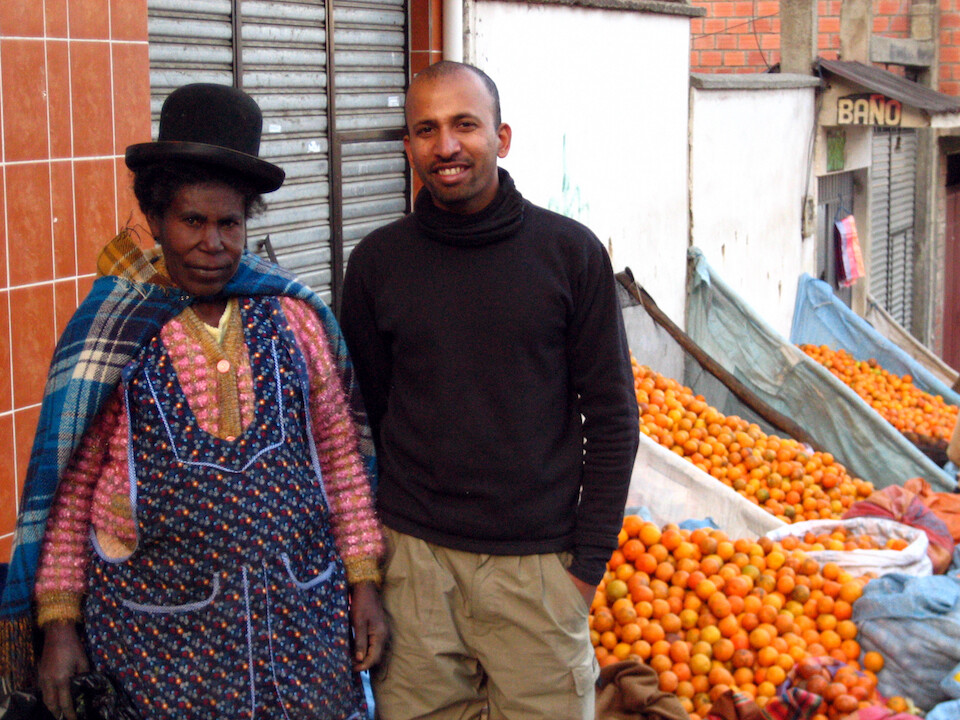
With Alfonso's mother-in-law, a Bolivian with very strong African ethnicity, where I'm headed next year.
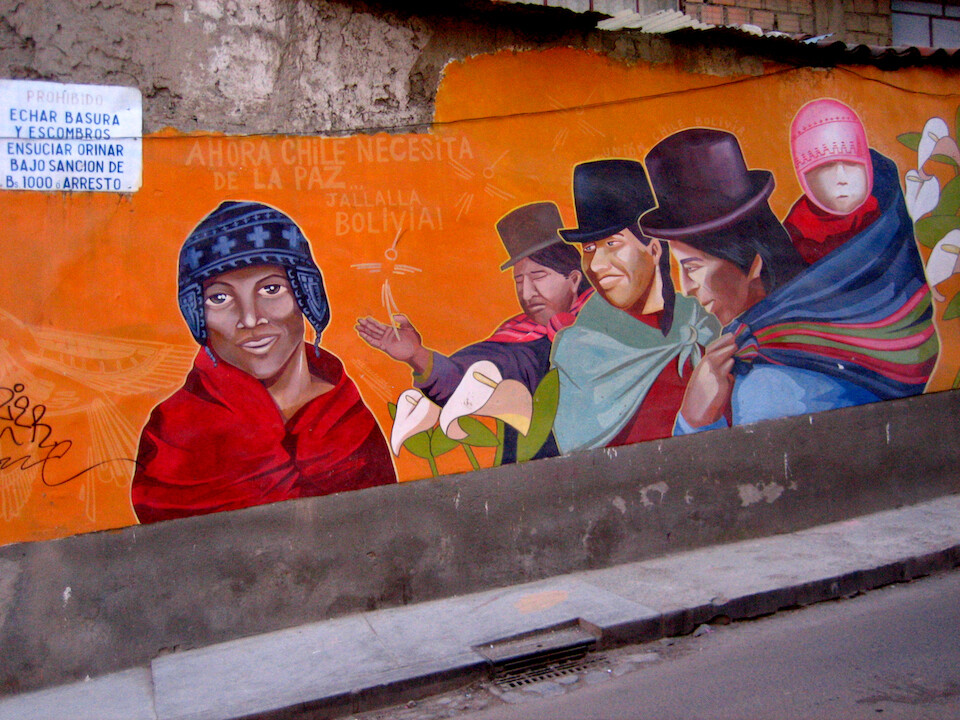
One of numerous murals around the city.

Saying bye to Achira and Alfonso as I head north out of La Paz for Brazil. Thanks for all the help, Alfonso.
Next: Bolivia, Part 3: Yungas and Mud Riding
Previous: Bolivia, Part 1: Copacabana, La Paz and Death Road